10 Easy Ways to Travel Scotland by Public Transport
Many of us are looking for simple things we can do to make travelling more sustainable, and exploring Scotland by public transport is an easy way to get started. Scotland’s public transport network is extensive and a great way to get a feel for the country.

Edinburgh to North Berwick Central
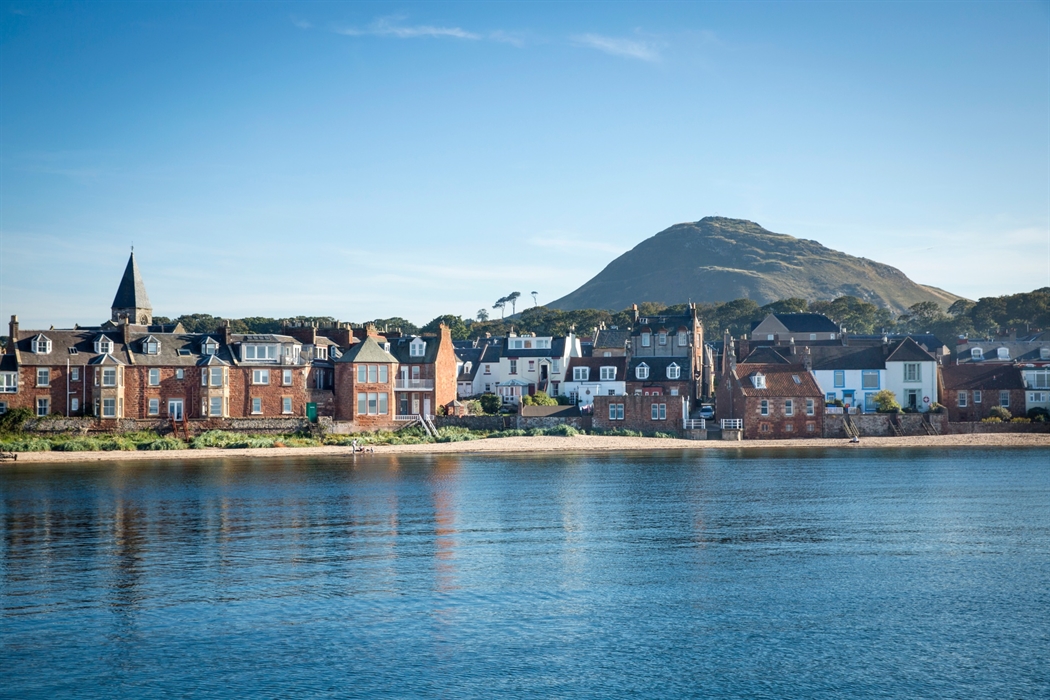
North Berwick Beach with the law in the background.
© VisitScotland / Kenny Lam. All rights reserved.
Mode of transport: Train
Length of trip: 35 mins
Ticket information: ScotRail
You’ve seen Edinburgh Castle and hiked up Arthur’s Seat, strolled along the Royal Mile and stopped for a drink in an Edinburgh pub: what’s next? How about a day trip to North Berwick?
This pretty seaside town is only a 30-minute train ride from the capital and it offers the chance to walk along the beach, play a round of golf or simply take in the coastal scenery. Kick back at the Lobster Shack at North Berwick harbour and enjoy fresh local seafood cooked to order.
Edinburgh to St Andrews Central to East Coast
West Sands, St Andrews
Mode of transport: Bus
Length of trip: 2 hours
Ticket Information: Stagecoach
From an ancient city to an ancient town, getting from Edinburgh to St Andrews couldn’t be easier. Departing from Princes Street in the city centre, the bus to St Andrews takes 2 hours. Once in St Andrews, Scotland’s famous home of golf, you’ll be able to see historic buildings, enjoy the beach and golf courses, and try some award-winning fish and chips.
Edinburgh to Galashiels Central to South
© South of Scotland Destination Alliance / Gethin Chamberlain
Length of trip: 50 mins
The Borders Railway has transformed travel to the south of Scotland. The line connects Edinburgh with Galashiels and Tweedbank in the Scottish Borders. There are lots of things to see along the route including the majestic Lothianbridge Viaduct and the beautiful Redbridge Viaduct near Tweedbank. The journey takes around 50 minutes, and you’ll find plenty of attractions in Galashiels, such as Old Gala House which dates back to 1583.
Glasgow to Fort William West Coast
The River Lochy with Ben Nevis
© VisitScotland / Airborne Lens
Length of trip: 3 hours
Ticket information: Citylink
Visitors to Glasgow will be pleased to know that in a little over 3 hours on the bus they can be in Fort William, the ‘Outdoor Capital of the UK’. This low-cost and environmentally-friendly excursion will give you access to some of the finest landscapes in Scotland, a wealth of outdoor activities and unique places to stay. From quiet country walks to Munro climbing, mountain biking and watersports, there’s lots going on around Fort William.
Glasgow to the Isle of Bute West Coast and Islands
Scalpsie Bay
Mode of transport: Train and ferry
Length of trip: 1 hour 30 mins
Ticket information: Trainline , CalMac
Staying in Glasgow but keen to experience Scottish island life? The Isle of Bute is one of Scotland’s most accessible islands, only 90 minutes from Glasgow. There are regular trains to the ferry terminal at Wemyss Bay from Glasgow Central Station and Paisley St James Station. The ferry takes around 35 minutes and no booking is required. The island has some fantastic standing stones and bronze age burial sites to explore, as well as diverse flora and fauna, places to eat and activities to enjoy.
Glasgow to Balloch Central to West
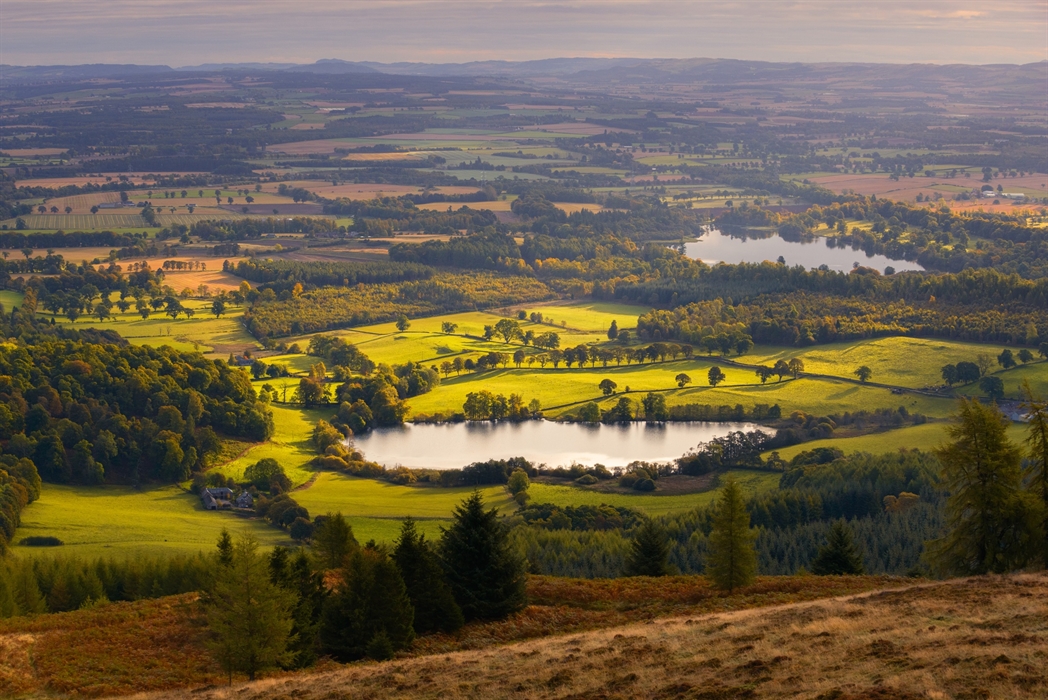
View of Loch Balloch and Drummond Pond from Turleum hill, near Crieff.
© VisitScotland / Crieff Succeeds / Damian Shields
Length of trip: 1 hour
Ticket information: First Glasgow
Glaswegians are a lucky bunch, they have all kinds of natural spectacles on their doorstep. Loch Lomond and The Trossachs National Park is a short bus ride away from the city, easily accessible from the pretty village of Balloch. It will take you just over an hour to reach Balloch from Glasgow and nearby things to do include Treezone , an aerial adventure course, and the Loch Lomond Bird of Prey Centre . The restored paddle steamer, the Maid of the Loch, is moored at Balloch Pier too.
Glasgow to Skye West Coast Islands
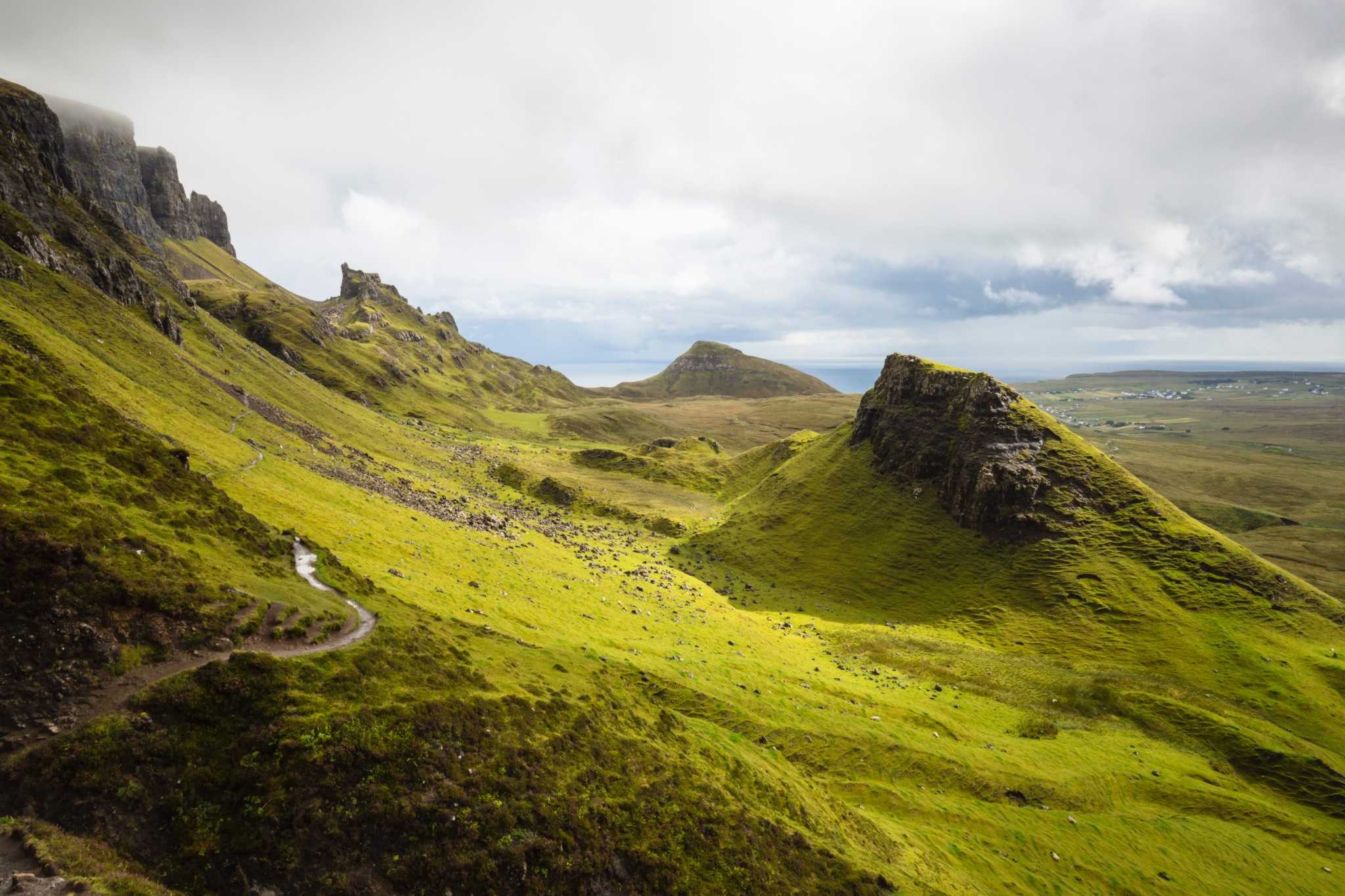
The Quiraing, Isle of Skye
© VisitScotland / Kenny Lam
Length of trip: 5 hours 30 mins
It's not a quick journey from Glasgow to Skye, roughly 200 miles, but the route will take you along good quality country roads with lots to see. At the end of your bus journey, you will be rewarded with one of Scotland’s best-loved destinations. Skye has mountains, miles of dramatic coastline and fascinating history to explore. Be sure to take a sturdy pair of boots to this magical island.
Perth to Aviemore Central Highlands
Loch Morlich in the Cairngorms National Park
Ticket information: Trainline
Surrounded by mountains, lochs and forests, Aviemore is a popular year-round destination for a huge range of summer and winter activities. An excellent base for exploring the Cairngorms National Park , you will be spoilt for choice when it comes to things to do. From Perth, the train takes around 1 hour 30 minutes.
Inverness to Aviemore Central Highlands
Rothiemurchus Forest
Mode of transport: Bus, Train
Length of trip: 40 mins
Ticket information: Trainline , Megabus
Aviemore is also easily accessible from Inverness via bus or train. With the journey time coming in at around 40 minutes, you could easily spend the day in Aviemore before heading back to Inverness to spend the night. Along with adventure activities, Aviemore is the gateway to a walker’s paradise. There are over 280 km of footpaths across the Cairngorms National Park that pass through almost every type of walking route imaginable.
Rail and Sail to Orkney and Shetland North Coast Islands
Churchill Barriers
Mode of transport: Train, Ferry
Length of trip: 6-12 hours
Orkney and Shetland might seem remote but there are great travel links to these two island archipelagos. For Orkney, take a train to Thurso along the scenic Far North Line. From there it’s a quick taxi ride to Scrabster and a ferry across the Pentland Firth to Stromness . Additional ferry services between the Scottish mainland and Orkney also operate further east of Thurso from Gills Bay to St Margaret’s Hope and from John 0’ Groats to Burwick.
To get to Shetland you’ll need to take the train to Aberdeen and catch a boat to Lerwick . This sail takes around 12 hours, but sea travel is a great way to unwind. Both Orkney and Shetland are famous for their ancient history and rugged seclusion.
Find experiences
JavaScript needs to be enabled to see this product search form. You can turn this on in your browser settings.
Other things you might like
Explore Scotland via Bus & Coach Tours
Train Holidays in Scotland - Getting Around by Rail
Everything You Need to Know if You're Travelling to Scotland
Sustainable & Responsible Tourism in Scotland

Green & Sustainable Businesses In Scotland
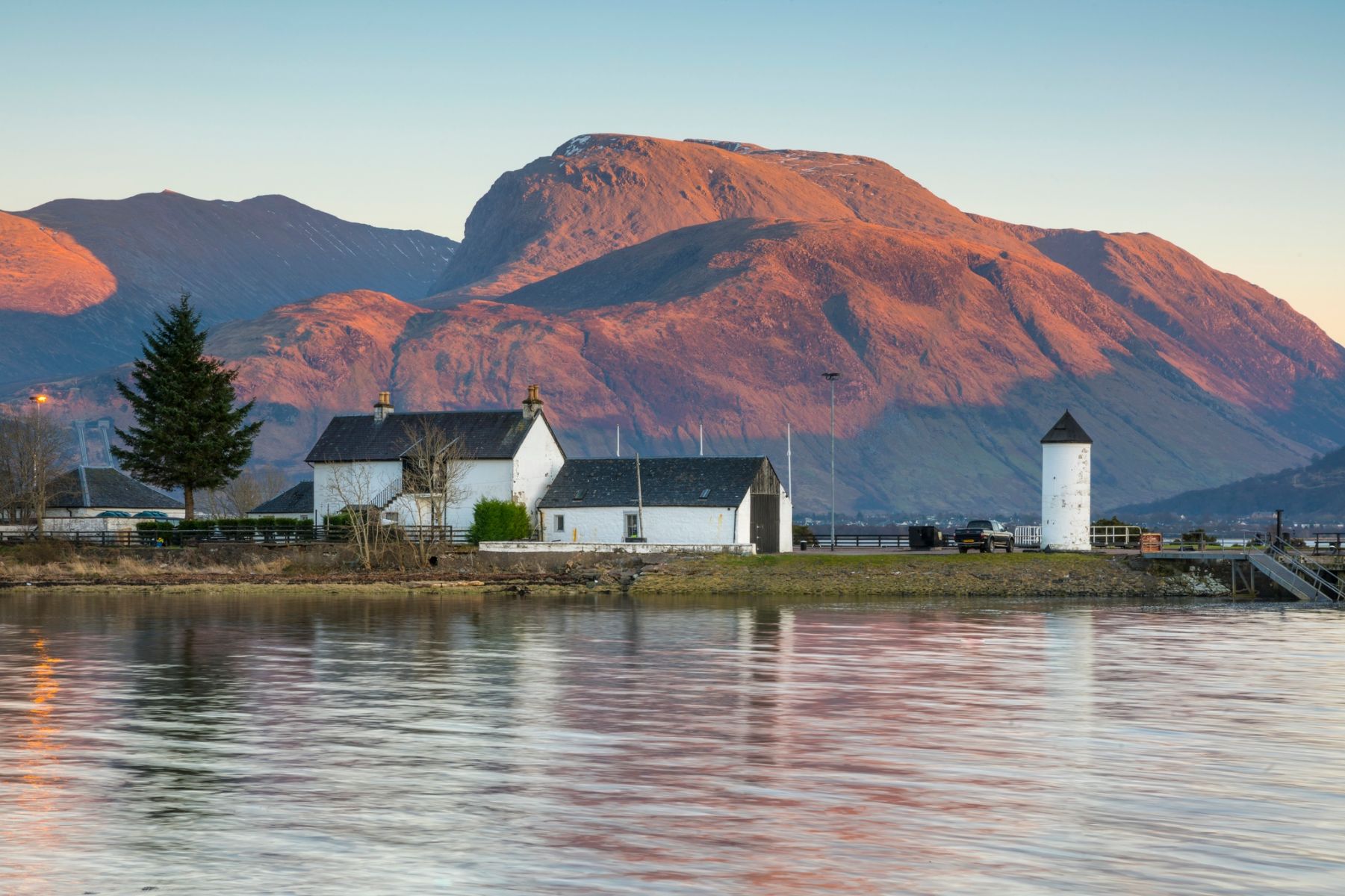
Skye and Fort William by public transport
Getting around Scotland by ferry
Join our newsletter clan.
Get Scotland inspiration direct to your inbox. Don't miss the inside track from our Scotland experts on exciting trip ideas, unique attractions and hidden gems loved by locals.
How to get around Scotland, from the highlands to the islands
May 27, 2023 • 10 min read

Scotland may be wee but its journey times can be mighty © Plume Creative / Getty Images
Distances in Scotland are small but the landscapes are enormous. A journey that looks like it should take minutes on the map can take hours once you factor in the glens, lochs and mountains in the way. Remember too that large parts of Scotland lie off the mainland, scattered across the choppy waters of the North Sea and the Atlantic.
With this in mind, the most important consideration when planning a trip around this stunning country is time. On a fleeting visit, try not to be too ambitious about how much ground you can cover, and plan train journeys and ferry trips in advance so you’re not caught off guard by the limited schedules in outlying areas.
When it comes to costs, getting around in Scotland can be expensive compared to the rest of Europe. Despite an impressive network of train, bus and ferry routes, the easiest option is usually to travel with your own car, particularly if you want to get off the tartan-and-shortbread tourist trail. However, costs can mount up if you plan to park in larger cities or take your car on the ferry.
Traveline Scotland is a good source of information and up-to-date timetables on all forms of transit, including ferries and flights to the Scottish islands. With our breakdown of the different ways to get around the country, you can make the best choice for your needs.

The train is an easy option for travel between major towns and cities
Scotland's extensive train network covers all major cities and towns, but the railway map has large, blank areas in the Highlands and the Southern Uplands where you'll need to switch to road transport – in many cases, traveling by local bus.
The West Highland line from Glasgow to Fort William and Mallaig, and the Inverness to Kyle of Lochalsh line , are two of the world's most scenic rail journeys. The ScotRail website is a good source of information on routes, fares and timetables.
Buses run to most places but not always frequently
Scotland is served by an extensive bus network that covers most of the country. In remote rural areas, however, services are geared to the needs of locals, for example getting to school or the shops in the nearest large town, and may not be conveniently timed for visitors.
Often, buses run into towns and cities in the morning, and back to outlying villages in the afternoon, which is inconvenient for those planning day trips. Local bus services are particularly sparse on the islands. The last postbus – a rustic rural transport operation where passengers traveled in a van with the mail – ceased operation in 2017.
Several different bus companies operate services around Scotland, with long-haul routes to destinations in England provided by National Express and Megabus . Within Scotland, Scottish Citylink runs a network of comfy, reliable buses to main towns. Away from main roads, you'll need to switch to local buses, which are often much less frequent – First , Stagecoach and Lothian Buses are the main local bus operators.

A car or motorcycle gives you the most flexibility
Scotland's roads are generally well-maintained and are far less busy than those in England , meaning you can concentrate on all that lovely scenery. However, speeding and drink-driving are taken seriously, and speed traps are common, so stick to the limits.
A non-UK license is valid in Britain for up to 12 months from your date of entry into the country, and you’ll need to be aged 21 or over to rent a car – surcharges and restrictions apply for drivers aged 25 or under. Hit comparison sites such as Kayak to find the best prices for car hire; hiring in town is usually cheaper than hiring at the airport.
If you’re bringing your own car from Europe, make sure you're adequately insured, always drive on the left, and be aware of local speed limits. If you’re planning a road trip encompassing the UK and the Republic of Ireland, car ferries run from Scotland to Northern Ireland , allowing you to loop south through the Republic of Ireland before getting back on a ferry to Wales and England , and then heading back to Scotland. Make sure your insurance covers the fact you're passing through a European country before heading back to the UK.
Motorways (designated "M") are toll-free dual carriageways, limited mainly to southern and central Scotland. You’ll quickly notice their absence once you drive north of Perth. Main roads ("A") are dual or single carriageways and are sometimes clogged with slow-moving trucks and caravans – the A9 from Perth to Inverness is notoriously busy.
Life on the road is more relaxed and interesting on the secondary roads (designated "B") and minor roads (with no letter), though in the Highlands and islands, there's the added hazard of sheep wandering onto the road (be particularly wary of lambs in spring). Winter driving conditions can be challenging; keep food, water and blankets in the car in case of blocked roads or breakdowns.
Petrol is more expensive than in countries such as the US or Australia, but roughly in line with the rest of Western Europe. Prices tend to rise as you get further from the main centers and can be more than 10% higher in remote areas, where petrol stations are widely spaced and sometimes closed on Sundays – fill up whenever you get the chance.
Tip for renting a car : Inter-island car ferries can be another major cost. If you’re planning to visit the Outer Hebrides , Orkney or Shetland , it'll often prove cheaper to hire a car once you arrive on the islands, rather than paying to take a hire car across on the ferry.

Ferries cross lochs and link the Scottish islands
Ferries run by Caledonian MacBrayne (CalMac) serve the west coast and the myriad islands to the north and west of the country, with smaller local ferries linking the islands of the Inner Hebrides to the mainland.
Northlink Ferries travel from Aberdeen and Scrabster (near Thurso) to Orkney, from Orkney to Shetland, and from Aberdeen to Shetland. Tourist-oriented waterbus services ferry passengers across some of Scotland’s larger lochs, including Loch Lomond .
CalMac no longer sells their Hopscotch tickets, but the company offers some pre-bundled inter-island tickets on their website , which also has comprehensive timetable information. Note that ferry services are significantly reduced in winter.
Tickets for foot passengers cost a fraction of the price charged for cars, so consider picking up a hire car on arrival on the islands rather than taking your car across.
Tips for traveling by ferry: If you feel up to tackling the islands by bike, cycles can be carried for free by foot passengers. This is particularly useful when it comes to exploring smaller islands by ferry. On most routes, children under five also travel for free, while kids aged five to 15 pay half the adult rate.
Domestic flights link up remote island communities
Most domestic air services in Scotland are geared to business travelers or are lifelines for remote island communities. Flying is a costly way to cover relatively short distances, for both your pocket and the environment, but it's worth considering if you're short of time and want to visit the Outer Hebrides , Orkney or Shetland . With a journey time of as little as one minute, the flight between Westray and Papa Westray in Orkney is the shortest scheduled flight in the world.
The main domestic airline in Scotland is Loganair , with flights from Glasgow, Edinburgh, Aberdeen and Inverness to many smaller destinations across Scotland. It also operates inter-island flights in Orkney. Hebridean Air Services flies from Connel airfield near Oban to the islands of Coll, Tiree, Colonsay, and Islay.

Cycling is ideal for exploring the islands
Scotland is a compact country and traveling around by bicycle is a perfectly feasible proposition if you have the time – and the stamina! Indeed, touring around the islands on a bike is both cheaper than driving (with lower ferry fares) and better suited to the islands' short distances and leisurely pace of life. Just be ready for uncooperative winds and weather, and persistent midges at rest stops in spring and summer.
VisitScotland has good information about bike hire and Sustrans details routes that form part of the UK-wide National Cycle Network. Spanning 200 miles and 10 windswept islands between Vatersay and the Butt of Lewis, the Hebridean Way is a bonafide cycling classic.
Transport Passes for Scotland offer good savings on trains, buses and ferries
Despite the multitude of companies providing different forms of public transport in Scotland, there are a few useful passes allowing travel on trains, buses, ferries and other forms of transport. Scotrail’s Spirit of Scotland pass allows unlimited travel on trains, buses and ferries for foot passengers, for either four days of travel over eight consecutive days (£149), or eight days of travel over 15 consecutive days (£189). They offer several other passes for train travel across Scotland or within specific regions, and combined passes for trains and buses or trains and ferries.
Scotland is also part of the same scheme of railcards as the rest of the UK, with various options giving up to a third off standard rail fares, usually for a one-off annual fee of £30 – a good deal if you’ll be making lots of journeys by train or are on a longer trip.
Although the Scottish government’s generous free transport scheme for young people is only open to Scottish residents, visitors can get discounts using the 16-25 and 26-30 railcards, and there’s the Senior Railcard for the over-60s. For travelers with kids in tow, the Family & Friends railcard is a smart investment. Note that all these cards cover train travel across the UK, not just Scotland.
Several bus companies offer their own transport passes. Stagecoach has the Megarider , offering savings of at least 40% compared to buying daily tickets – passes are valid for seven or 28 days and cover specific areas of the country. Citylink has the Explorer Pass , allowing unlimited travel on their buses for three days over five consecutive days, five days over ten consecutive days, or eight days over 16 consecutive days.

Accessible transportation in Scotland
Travelers with disabilities will find that Scotland can be both impressively accessible and frustratingly tricky to navigate. Larger cities are the most well-adapted locations for mobility issues – buses and local trains are wheelchair accessible, pavements and buildings have ramps, and most access points are well set up.
Across the country, most major tourist sights cater to those with mobility issues, though historic buildings and ancient sights can be harder to explore for the less mobile. The biggest challenge will be the hills, which can make getting around a chore, even in the middle of Edinburgh. However, there are growing efforts to make the countryside more accessible, with wheelchair-friendly nature trails in some areas.
Away from the cities, newer buses are usually wheelchair accessible, but it's wise to check before setting out. Older train stations are being upgraded to ensure they are accessible and disabled travelers can get extra assistance by filing a request an hour or more ahead of travel – the Scotrail website has details.
The Disabled Persons Railcard offers discounts on rail travel for eligible travelers and a companion. Ferries offer boarding assistance at staffed ports for disabled travelers and large boats usually have accessible toilets and cabins.
Tourist attractions usually reserve parking spaces near the entrance for drivers with disabilities. Many places, such as ticket offices, are fitted with hearing loops to assist the hearing-impaired; look for a posted symbol of a large ear. VisitScotland has information on accessible transportation and accommodations, along with information on beach wheelchair hire.
Lonely Planet's Accessible Travel guide can also be downloaded for free .
This article was first published May 2021 and updated May 2023
Explore related stories

Sustainable Travel
Apr 1, 2024 • 11 min read
With its small size, flat terrain and range of public transport options, getting around Dublin is easy. Here are the best ways to travel in Dublin city.

Mar 31, 2024 • 6 min read

Mar 30, 2024 • 4 min read
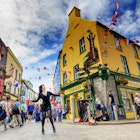
Mar 30, 2024 • 11 min read

Mar 28, 2024 • 6 min read

Mar 27, 2024 • 9 min read

Mar 22, 2024 • 9 min read

Mar 14, 2024 • 16 min read
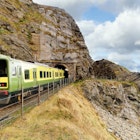
Mar 13, 2024 • 7 min read
- WATCH ME SEE | A SCOTLAND TRAVEL BLOG
- Privacy Policy

- Itinerary Review
- Ready-Made Itineraries
- Bespoke Itineraries
- Planning Your Trip
- Scottish Regions
- Free Checklist
- Scotland Itineraries
- All Blog Posts
- Where to go?
- Scotland Resource Library
- Scotland Travel Journal
- Meine Schottland Bücher
- About Watch Me See
- Work with Me
- In the Press
Itineraries , Scotland
8-day best of scotland itinerary by public transport.
Want to avoid soaring petrol prices or travel more eco-friendly? No matter why you choose to travel by train and bus, use this version of my Best of Scotland itinerary by public transport to explore the best of Highlands, the Isle of Skye, Inverness, Edinburgh and Glasgow without a car!
This post contains affiliate links from which I may make a commission. Find out more here . All opinions are my own.
Soaring petrol prices, rental car shortages, greater climate awareness, a fear of driving on the left – there are many reasons for why you might want to travel Scotland by public transport.
The Best of Scotland itinerary is the most popular itinerary on my website. But it’s primarily designed for people who hire a car and go on a road trip.
This blog post will help you to figure out how to see the best of Scotland and follow my route from Glasgow through the Highlands, to the Isle of Skye, Inverness and Edinburgh by public transport.
Read on for:
- The pros and cons of train and bus travel in Scotland
Tips for using public transport in Scotland
- My most popular 8-day Scotland itinerary by public transport
- Some suggestions for alternative itineraries
- Some suggestions to extend the route to 10 or 14 days
You might also like: How to travel Scotland by Public Transport – A Practical Guide

The pros & cons of travelling Scotland by public transport
Going on a road trip with a (rental) car and travelling Scotland by public transport will give you very different experiences. Even though you can reach many of the same locations and follow roughly the same route, the end result will be wildly different.
Maybe you’re still weighing up your options, or maybe hiring a car is out of the question for whatever reason. Here are some things to consider when travelling Scotland by train and bus.
Pro – It’s more environmentally friendly : If traveling sustainably is important to you, that’s a biggie. Travelling by train and bus is a lot more eco-friendly and less harmful for the planet than hiring a petrol or diesel car. Especially if you travelled to Scotland by plane, continuing your journey on public transport can off-set some of your carbon emissions – or at least won’t add as much to your footprint.
You might also like: 14 tips for responsible tourism in Scotland
Con – It’s less flexible : Exploring Scotland by bus and train gives you less flexibility to explore – which is why my ready-made Scotland itineraries are all designed with a car in mind. You’re restricted to scheduled departure times and routes. This will dictate which places you can visit and now much time you have in each destination.
Pro – It’s cheaper than hiring a car : Another biggie. Since the Covid-19 pandemic, hiring a car has become incredibly expensive and now petrol prices are soaring too. Taking trains and buses around Scotland can be a lot cheaper, especially if you travel solo and purchase your tickets in advance.
Con – You can’t stop wherever you like : On public transport, you travel from A to B. If you get off at a stop in between, you have to wait for the next train or bus, and you have to take all your luggage with you. This means that it’s a lot harder (to impossible) to stop spontaneously along the way to visit an attraction or enjoy a viewpoint.
On the other hand, it means that you get all the time at your end destination. Being restricted also means that you don’t have to make as many choices which in turn can take out the overwhelm of trip planning. This is actually a hidden pro!
Pro – It’s more comfortable than driving : Taking trains and buses, you don’t have to worry about driving on narrow country roads through the Scottish Highlands. You don’t have to remember to drive on the left. You can just sit and enjoy the views. On trains, you can even walk around, so you’re not stuck sitting down for hours on end.
Pro – It’s great for solo travellers : You see, I’ve run out of cons… My Scotland itinerary by public transport is particularly great for solo travellers. It’s cheaper than paying for a rental car all by yourself, you don’t have to do all the tiring driving yourself, you’re reducing your environmental impact and some decisions are made for you by schedules and routes.
What more could you ask for?
How much do you know about Scotland? Take this Scotland quiz and test your friends!

Take a look at my full practical guide to using public transport in Scotland. It tells you everything you need to know about trains, bus companies and ferries in Scotland, where to buy tickets and lots of tips for planning a trip using public transport.
The tips below are specifically for following my Best of Scotland itinerary by public transport.
Should you get a travel pass?
ScotRail, the Scottish train company, offers different kinds of travel passes. The Spirit of Scotland pass is available for 4 travel days over 8 consecutive days for £149 or 8 travel days over 15 consecutive day for £189. It includes all ScotRail trains on the Scottish network (but not the Caledonian Sleeper or the Jacobite Steam Train), some bus routes that connect train stations and ferry ports, and all Calmac ferries on the west coast. See the complete route card here .
This pass also includes a few other perks, such as free travel on the Glasgow subway and Edinburgh tram, discounts on the City Sightseeing buses and on the Jacobite Loch Ness Cruise – just to name the ones relevant for this itinerary.
The Grand Tour of Scotland pass is also valid for 4 travel days over 8 consecutive days, but only includes trains and buses along a set route through Scotland. It can be used for most of the route described below, but it does not include the perks and discounts of the Spirit of Scotland pass. Additionally, on Skye, it only includes the bus route from Armadale to Kyle of Lochalsh, not up to Portree – you’d have to pay extra for that.
Either 4-day pass would work for this itinerary, travelling on days 2, 3, 5 and 6. Note that not all routes are included in the pass – the bus from Fort William to Portree and the bus from Portree to Inverness are not covered by the Spirit of Scotland pass. However, I have included alternative routes below that are included.
The bus company Citylink offers an Explorer Pass which covers their Scotland-wide network. The 5-day pass gives you unlimited bus travel on Citylink buses within 10 consecutive days. You can use this pass to follow. myBest of Scotland itinerary by public transport, but it does not include any train or ferry travel.
Should you book tickets in advance?
If you don’t get the Spirit of Scotland pass, book all train and bus connections in advance. Booking train tickets in advance ensures that you get the best available price. Booking bus tickets in advance, can give you a better price, but more importantly it guarantees you a seat. Buses have less capacity and therefore only sell a certain number of tickets. You can reserve seats on many trains, but not required.
If you get the Spirit of Scotland pass, you don’t have to book train tickets in advance – you can just board any train on the included routes. But you must book Citylink buses in advance. Find out how here .
If you get the Citylink Explorer Pass, you have to book seat reservations in advance. Seat reservations are free for Explorer pass holders, but subject to availability. Book as far in advance as possible to avoid disappointment.
Keep track of your travel memories with my Scotland Travel Journal !

Packing & Luggage
Do your best to pack lightly. It will make boarding trains and buses, and walking to your accommodation a lot easier.
I prefer travelling with a backpack, because I like having my hands free when I travel by public transport.
If you bring a suitcase, get one with four wheels for better maneuverability.
Most hotels, B&Bs and hostels will be happy to store your luggage for a few hours on either side of your stay. Just ask in advance.
Alternatively, research luggage storage facilities. You’ll find lockers at the train stations in Glasgow, Edinburgh, Fort William ad Inverness.
Booking places to stay
Make sure you book accommodation within easy walking distance of bus and train stations.
Local transport
Research local taxi companies if you need help getting to and from your accommodation. Note that Uber only works in Glasgow and Edinburgh.
Less is more
This Scotland itinerary by public transport covers the same route and destinations as my regular “Best of Scotland” itinerary which is designed for a road trip with a (rental) car. However you’ll soon see that it’s a fast-paced itinerary and you will spend a lot of time on buses and trains.
Consider slowing your itinerary down by adding additional days or removing a destination. This will relax your itinerary and means you’ll get more time in each destination. It might be nice not to move on every day or two if you have to carry all your stuff.
If you need help building a custom Scotland itinerary by public transport, get in touch !

The best of Scotland by public transport in 8 days
Now without further ado, let’s dive into the itinerary. In this blog post, I won’t go into great detail about what to do in each destination. You will find inspiration via the linked travel guides and resources below, or you can purchase my Best of Scotland itinerary for concrete suggestions and heaps of links.
Not sure if this is the best itinerary for you? Find out how to choose the ideal Scotland itinerary !
Day 1: Arrive & Glasgow
Arriving in Scotland: I recommend flying into Edinburgh international airport because it’s well-connected to both cities. There is a direct airport bus to Glasgow, and several options to go to Edinburgh. Glasgow airport is well connected to Glasgow, but a little trickier to get to from Edinburgh.
Things to do in Glasgow: Hopefully you land early in the day and can spend the rest of the day exploring Glasgow. Check out my ‘One Day in Glasgow’ guide . Take the hop-on, hop-off City Sightseeing bus to get an overview – with the Spirit of Scotland pass you’ll get a discount. My other highlights include visiting Glasgow Cathedral and the Necropolis, following the City Centre Mural Trail , exploring the University of Glasgow campus or heading to Pollok Park to see the Highland coos.
Where to stay: I recommend staying in the city centre, not too far from Buchanan Bus Station and Glasgow Queen Street train station. Try the Motel One , Moxy Merchant City or citizenM , or find some of my other recommended options here .

Day 2: Glasgow to Fort William
Take the morning train or bus from Glasgow to Fort William in order to have the afternoon to explore this town in the Highlands.
Getting from Glasgow to Fort William: The train leaves from Glasgow Queen Street station and takes just under 4 hours. This journey along the West Highland Line is one of the most scenic train journeys in Scotland. This route is included in the Spirit of Scotland/Grand Tour of Scotland pass.
Alternatively, take the Citylink bus from Buchanan bus station. The journey is a little shorter and also very scenic (you actually drive through Glencoe which is stunning), but the route is not included in the Spirit of Scotland pass.
Things to do in Fort William & where to stay: Check out my Fort William travel guide for my recommended things to do and places to stay in Fort William. I recommend hiring e-bikes to cycle out to Glen Nevis, visiting the West Highland Museum, going on a cruise or doing a water activity on Loch Linnhe.

Day 3: Fort William to the Isle of Skye
Spend the morning in the Fort William area and take an afternoon bus to the Isle of Skye, or spend the majority of the day on the road to go via Mallaig and Armadale.
Getting from Fort William to Skye: The quickest and easiest route is to take the Citylink bus from Fort William to Portree via Glen Shiel. This takes just under 3 hours, but is not included in the Spirit of Scotland/Grand Tour of Scotland pass.
The longer and arguably more scenic journey is to take the train from Fort William to Mallaig, the ferry to Armadale on Skye and then then bus to Portree. With changes and transfer times, this journey will probably take the majority of the day. The train takes the same tracks as the famous Jacobite Steam Train, so you will be crossing over the viaduct. This route is included in the Spirit of Scotland pass. The Grand Tour of Scotland pass does not contain the entire bus journey to Portree, so you’ll have to pay extra for that.
You can even take the Jacobite Steam Train to Mallaig, but be aware that you have to purchase a return ticket even if you only take a single journey. Note that the steam train is not included in any travel pass and must be booked well in advance. Space for luggage is subject to availability.
Where to stay on Skye: I recommend staying in Portree as most guided tours around the island and many activities leave from there.
Things to do in Portree: When you arrive, spend time exploring Portree. Walk around its beautiful harbour, climb the Apothecary Tower and browse the little shops in the village. Local buses on Skye are extremely limited, so once you’re in Portree, you’re there.

Day 4: Isle of Skye
Considering that local bus schedules on Skye are rather patchy – and local buses don’t run at all on Sundays – it’s best to book a guided tour or activity from Portree.
Guided group tours are usually offered in small mini-buses, so you won’t have to endure a huge coach tour. They are great to take you around the major sites and attractions on Skye such as the Old Man of Storr and the Quiraing on the Trotternish Peninsula, Neist Point, the Fairy Pools and others. There are different routes and you can find some suggested companies here .
Outdoor Activities in Skye: If you want to try kayaking, canoeing, coasteering, wildlife watching or other boat trips, check out some options for outdoor activities here .
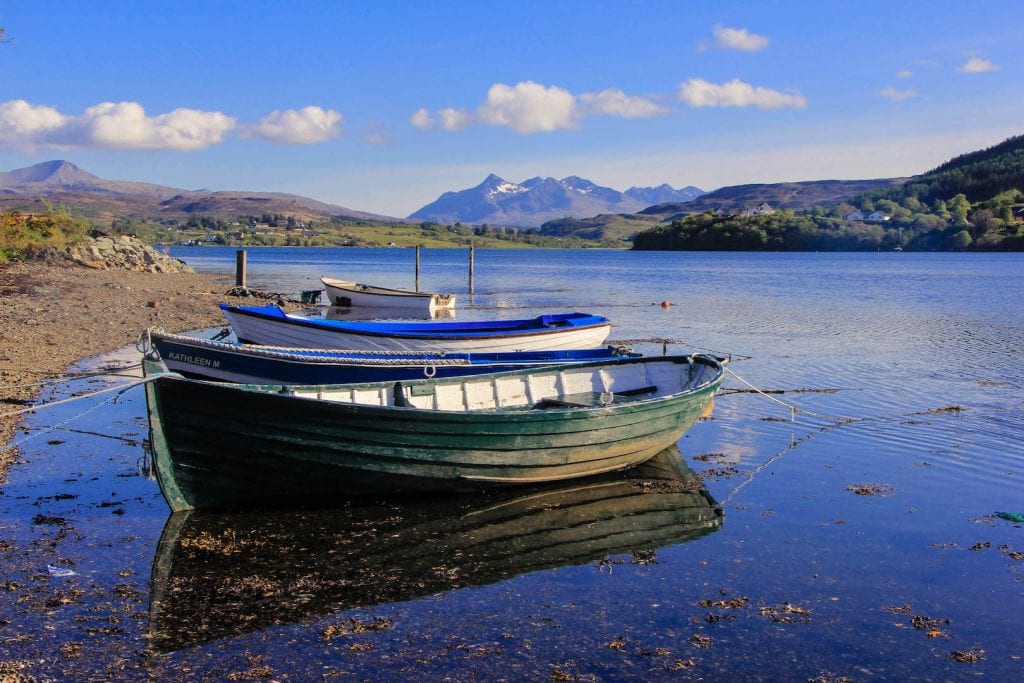
Day 5: Isle of Skye to Inverness
Travel to Inverness in the morning so you arrive in the early afternoon with time to explore the city and surroundings.
Getting from Skye to Inverness: The quickest and easiest route is to take the Citylink bus from Portree to Inverness. It takes roughly 3.5 hours, but the route is not included in the Spirit of Scotland/Grand Tour of Scotland pass.
Alternatively, take the Citylink bus to Kyle of Lochalsh on the mainland, just across the Skye Bridge, and then the train from there to Inverness. With changes and transfer times, this takes longer than the direct bus, but it’s a scenic railway journey. Additionally, this route is included in the Spirit of Scotland pass; with the Grand Tour of Scotland pass, you need to pay extra for the Portree-Kyle of Lochalsh bus.
Things to do in Inverness & where to stay: Use my Inverness travel guide to plan your time in the city and find my recommended places to stay. The hop-on, hop-off City Sightseeing bus is a great option because one of its routes heads out to Culloden Battlefield as well as the Caledonian Canal from where you can do a cruise on Loch Ness. With the Spirit of Scotland pass you’ll get a discount.

Day 6: Inverness to Edinburgh
Spend the morning exploring Inverness and take a midday or afternoon train or bus to Edinburgh. That way, you’ll arrive in the afternoon or evening, depending on how much time you want in the city.
Getting from Inverness to Edinburgh: The direct train takes just under 4 hours and is included in the Spirit of Scotland/Grand Tour of Scotland pass. Citylink and several other companies such as Megabus also operate direct buses which are slower but cheaper, and not included in the Spirit of Scotland pass.
Where to stay in Edinburgh: I recommend staying around Haymarket or in the New Town, so you don’t have to carry your luggage up into the Old Town – there are many steep staircases and old cobbled lanes in the medieval Old Town. The New Town is still historic (18th century), but less hilly and more modern infrastructure. That said, the Old Town is always just a short walk away. Find my recommended hotels, B&Bs and hostels here .

Day 7: Edinburgh
You have a full day in Edinburgh. There is a lot to do and see, but a day can give you a great overview.
Things to do in Edinburgh: Use my Edinburgh guide to put together your itinerary for the city and pick and chose some sites to visit and neighbourhoods to explore. You can also take the hop-on, hop-off buses to get an overview. With the Spirit of Scotland pass you’ll get a discount.
Some of my highlights include walking up and down the Royal Mile, exploring its narrow wynds, green courtyards, hidden gardens and historic closes, visiting the rooftop of the National Museum of Scotland, climbing to the top of Scott Monument or Nelson Monument for views, hiking Arthur Seat or Calton Hill for sunset, and restaurant and bar hopping in Leith or Stockbridge.

Day 8: Departure Day
From Edinburgh it’s an easy bus or tram journey to Edinburgh airport. If you fly from Glasgow airport, take the train to Glasgow and then the express bus out to the airport.
Alternative routes
Here are some suggestions for alternative routes, following roughly the same itinerary.
Swap Skye for Oban
The Isle of Skye is very popular and can be very busy during the summer months. Or maybe the idea of a guided group tour around the island puts you off? Consider swapping the Isle of Skye for Oban , a bustling seaside town on the west coast.
From Glasgow, take the scenic train journey to Oban and spend two nights there. Use my Oban travel guide and my list of suggested day trips from Oban for inspiration. My highlights include the organised bus and boat trip to the Isle of Staffa and the Treshnish Isles to see puffins (late April to early August), hiring and (e-)bike and cycling on the Caledonia Way , or visiting one of the small isles near Oban ( Kerrera or Lismore).
Then take the bus to Fort William and from there, another bus to Inverness. All these routes are included in the Spirit of Scotland pass.

Slow it down and eliminate a destination
If you think this Scotland itinerary by public transport is too fast-paced, I suggest slowing it down by eliminating a destination – either the Isle of Skye, Inverness or Fort William.
- If you eliminate Skye, add one or two nights in Glasgow, Fort William or Inverness to have more time there. You could also consider adding a night in Perthshire on your way from Inverness to Edinburgh – for example in Pitlochry, which is a stop on that train route.
- If you eliminate Inverness, flip the itinerary and go straight from Glasgow to Skye. There is a direct Citylink bus, but it’s not included in the Spirit of Scotland pass. After 2 nights on Skye, return by bus to Fort William and add a second night there. Then travel from Fort William to Edinburgh by train via Glasgow.
- If you eliminate Fort William, take the Citylink bus from Glasgow to Skye (not included in the Spirit of Scotland pass). Then continue as above via Inverness and add a second night in Inverness.
Extending your trip
Of course, you may want to extend your trip. I recommend spending more time in the existing destinations on the itinerary, rather than adding lots of other places.
- Make it 10 days and add a night in Glasgow and one in Fort William. Then take day trips in the local areas using my Glasgow day trip ideas and my Fort William travel guide .
- Make it 2 weeks and add nights in Oban and Perthshire as suggested above.
Of course, there are many other regions to explore in Scotland by public transport. Most of my ready-made Scotland itineraries can be done by public transport with a few adjustments.
Pin this post:

Planning a trip to Scotland?
Download my FREE Trip Planning Checklist
Join my Facebook group to find inspiration for big & small adventures
Listen to my podcast Wild for Scotland for lots of travel inspiration
Use my Scotland Travel Journal to document your trip
Make trip planning easier with my Scotland Resource Library
Save time and get one of my pick-up-and-go Scotland itineraries
Beat the overwhelm and hire me to plan a bespoke itinerary for you
4 thoughts on “ 8-Day Best of Scotland Itinerary by Public Transport ”
This is the most fantastic guide! I am planning a trip to Scotland at the end of November and all of the information here was incredibly helpful. I am really looking forward to exploring the rest of this website for all this advice 🙂
I’m happy to hear it! If you need any personal feedback on your itinerary or help planning an aspect of your trip, you may be interested in my itinerary review service: https://watchmesee.com/itinerary-review-service/ Cheers, Kathi
Wow. Your post is so helpful to me!!! Thanks. Will be looking into each of your travel guides. So inspiring as I’ve been comparing an organised tour vs one by public transport vs renting a car (but we’ve never driven abroad, my daughter has though).
Happy to hear that 😊
Leave a Reply Cancel reply
Your email address will not be published. Required fields are marked *
48-Hour Itinerary
Day Trips From Edinburgh
Top Things to Do
Best Museums
Visiting Edinburgh Castle
Guide to Arthur's Seat
Best Restaurants
Nightlife Guide
Best Time to Visit
Edinburgh Airport Guide
Public Transportation
Getting Around Edinburgh: Guide To Public Transportation
Getty Images
Although Edinburgh is known as a very walkable city, the Scottish destination also has a solid public transportation system. Run by Transport for Edinburgh, the city's primary public transportation options include buses, trams, and rental bikes. The main bus company, Lothian Buses , operates more than 50 routes, connecting locals and travelers to the city center as well as the surrounding suburbs and Edinburgh Airport .
Most visitors to Edinburgh will concentrate their itinerary to the city center and the Royal Mile, making it unnecessary to rent a car or take a lot of taxis. Meanwhile, the airport is easily accessed by bus or tram, with extensive hours available for early or late travelers. Here's what you need to know about using public transportation in Edinburgh.
How to Ride Lothian Buses
There are several bus companies that operate in and around Edinburgh, but Lothian Buses is the city's main mode of public transportation. In addition to its NightBus and Airport Bus services, the bus line operates more than 50 different routes throughout the city. Other local bus companies include First , which connects South East and Central Scotland (and is not run by Transport for Edinburgh).
- Fares: Single journey adult tickets start at 1.80 pounds. DAYtickets, which allow unlimited rides on Lothian Buses and Edinburgh Trams, can be also be purchased for 4.50 pounds (2.20 for kids between the ages of 5 and 15). Families can buy group DAYtickets, which are available for two adults and up to three kids for 9.50 pounds. NightBus tickets and Airport Bus tickets must be purchased individually.
- How to Pay: Tickets or DAYtickets can be purchased directly from the bus driver if you have exact change. Contactless credit and debit cards can also be used, and both adult and family tickets can be purchased in advance on the Transport for Edinburgh m-tickets app .
- Routes and Hours: There are numerous routes both in Edinburgh proper and to the surrounding areas, some of which run 24 hours a day. Check the times for your journey online ahead of traveling or use the Transport for Edinburgh app.
- Service Alerts: All current service alerts, including closures and roadworks, for Lothian Buses can be found on the company's website .
- Transfers: Travelers using DAYtickets can freely transfer between the Lothian Buses and the Edinburgh Trams. Other passengers should use either the m-tickets app or a contactless card to tap on and off the buses to get the best fare when transferring.
- Accessibility: There is a dedicated wheelchair space on all buses; passengers are asked to clear the space (and parents to fold strollers) whenever a wheelchair user boards. Mobility scooters are not permitted on the buses.
Riding Edinburgh Trams
Edinburgh Trams connects Edinburgh Airport with York Place via 15 stops, all of which are wheelchair accessible. The trams are a good option for connecting with the airport, although they are less useful for getting around the city itself when staying in the Royal Mile. The airport is about 35 minutes from Princes Street, which is the tram stop nearest to the city center.
- Fares: Tram fares start at 1.80 pounds for a single journey adult ticket. You can also purchase a return for 3.40 pounds or a DAYticket for 4.50. For those traveling to and from Edinburgh Airport, fares start at 6.50 pounds for a single journey adult ticket. Tickets are available at ticket machines at each tram stop, and can be purchased with exact change or a credit or debit card. Use the Edinburgh Trams Farefinder to calculate your route.
- Hours: The trams run from early morning until around 11 p.m., although the first and last tram times vary based on which direction you are traveling. The trams run every 7 minutes during the day and every 10 minutes before 7 a.m. and after 7 p.m. Check the online timetable ahead of time to plan your journey.
- Service Alerts: Live tram departure information and service alerts are available on the Edinburgh Trams website .
Using Edinburgh Cycle Hire
Transport for Edinburgh offers Edinburgh Cycle Hire as a way for residents and visitors to temporarily rent bicycles around the city. The bikes are parked throughout Edinburgh at 99 different stations; they can be rented using an app, available for iPhone and Android, which allows users to unlock a bike and ride for up to one hour. There are both electric and pedal bikes available, and you can select multi-trip access if you plan to use the bikes to stop at various attractions. While helmets are not required for cyclists in Edinburgh, it's recommended to ride safely and take proper precautions.
Taxis and Ridesharing Apps
With several taxi companies operating in Edinburgh, cabs can be hailed around town, at the airport, or booked online or by phone. Central Taxis is the most popular black cab company in the city, and offers guided driving tours of Edinburgh for those who want to take advantage of the cabbies' knowledge. A taxi from Edinburgh Airport to the city center typically costs between 20 and 25 pounds, but can run higher depending on traffic and other circumstances. Uber also operates in Edinburgh; the ridesharing app is often cheaper than a taxi, but does require you to have cell phone service to use it.
Renting a Car
Numerous car rental companies are available in both Edinburgh proper and at Edinburgh Airport. These include Sixt, Budget, and Hertz. While it might be daunting to drive on the opposite side of the road and learn foreign street markers, a rental car is a good way to travel outside Edinburgh or venture to more remote destinations. Be sure to add the GPS to your rental, especially if you are concerned about your cell signal, and have all your necessary documents ready when you arrive at the rental counter. Those driving into Edinburgh itself should be aware that parking in the city center can be a challenge, as many parking spots are restricted and some are reserved for resident drivers. Look for pay-and-park lots or talk to your hotel about the best parking option.
Tips for Getting Around Edinburgh
- Edinburgh is an extremely walkable city, so if you're having trouble figuring out the best option for public transportation, grab some sturdy shoes and open Google Maps. Many of the main attractions in Edinburgh are in the city center near the Royal Mile, which means they are well positioned for walking.
- During big events, holidays, or on warm days, you might spot pedicab drivers around the city center. The pedicabs have been operating in Edinburgh since 1996, and visitors can hail one for a (short) ride. The price is negotiable, although expect to pay a solid fee for the journey.
- Traveling between Edinburgh and Glasgow is quick and easy (the drive is about an hour). Trains are available from Edinburgh's Waverley to Glasgow Queen Street regularly, or you can take a bus or taxi service between the two cities.
Your Trip to Edinburgh: The Complete Guide
Getting Around Frankfurt: Guide to Public Transportation
Getting Around Birmingham, England: Guide to Public Transportation
Getting Around Madrid: Guide to Public Transportation
Getting Around Paris: Guide to Public Transportation
Getting Around Manchester: Guide To Public Transportation
Getting Around Beijing: Guide to Public Transportation
Getting Around Pittsburgh: Guide to Public Transportation
Getting Around Budapest: Guide to Public Transportation
Getting Around Mexico City: Guide to Public Transportation
Getting Around London: Guide to Public Transportation
Getting Around Prague: Guide to Public Transportation
Getting Around Strasbourg: Guide to Public Transportation
How to Travel Around Paris Like a Local
Getting Around Zürich: Guide to Public Transportation
Get Daily Travel Tips & Deals!
By proceeding, you agree to our Privacy Policy and Terms of Use .
Getting Around Scotland: Transportation Tips
Independent Traveler
Travel Smarter! Sign up for our free newsletter.
The transport infrastructure in Scotland is generally good, with many services operating across borders to make travel from the rest of the U.K., as well as the rest of the world, easy. Airports are modern and well equipped, and trains and buses offer a wide network to most cities and towns. To get to some of Scotland’s more remote areas, though, you may need to rent a car.
Here are a few practical ways of getting around Scotland, as well as tips on what to expect from Scotland transportation.
Scotland by Plane
Scotland has four main airports: Aberdeen, Glasgow, Glasgow Prestwick and Edinburgh. Airlines including Virgin Atlantic, United and Icelandair fly direct from North America, while others offer connecting service. There are also regular links with European airports.
Scotland is not a huge place, so internal flights are not necessarily the best way to get around — they can be expensive compared to train and bus service without saving you much time. However, flights may be your best bet to reach more remote places such as the Hebrides and the Orkney and Shetland Islands.
Eastern Airways, Loganair and Flybe all provide domestic service within Scotland and also connect Scottish airports with other destinations within the U.K.
Resources: EasternAirways.com Flybe.com Loganair.co.uk
Renting a Car in Scotland
While public transportation serves most major cities and towns, travelers looking to explore Scotland’s countryside may wish to rent a car. As in the rest of the U.K., Scots drive on the left side of the road, and the steering wheel is on the right. Most rental cars will be manual unless you request otherwise when making your booking.
Before going anywhere, visitors will need to make sure they have a valid driving license. Those with licenses issued in the United States can drive small vehicles for up to 12 months after they’ve entered the U.K.; an international driving permit is not necessary.
Insurance can be bought at the car rental desks in most U.K. airports; however, you may want to do so in advance online when booking to save time.
Fuel can be expensive in Scotland, especially in the more rural parts of the country. While cities like Dundee have reasonable petrol prices, more northerly areas, like Stornoway, have traditionally seen much higher prices than other parts of the U.K. Be sure to fill up before departing for remote areas.
The Scottish road network is fairly extensive, with a concentration of motorways in the country’s “Central Belt” between the Highlands and the Southern Uplands. The rest of the country is well connected with large “trunk” or “A” roads.
Navigating can be tricky. The larger roads, motorways and cities have signage that corresponds to international standards, but if you’re headed to more rural areas, we recommend investing in a GPS device, a decent map or both.
Resources: AutoEurope.com Europcar.com
Taking the Train in Scotland
One of the best ways to get around Scotland quickly and cheaply is by train. Passengers can enjoy the rugged Scottish scenery from their seats, taking in sights like the Glenfinnan Viaduct and the lochs and glens visible from classic routes such as the West Highland Line.
Scotland’s rails cover most of the country, especially in the Central Belt region. Main cities like Edinburgh are well connected; Scotland’s capital is only about four or five hours from London .
A number of train companies run services to Scotland. East Coast, Virgin Trains, ScotRail and Cross Country Trains all connect Scotland with the rest of the U.K. ScotRail’s Caledonian Sleeper service provides an excellent overnight link between London and various Scottish cities.
Within Scotland itself, ScotRail operates all domestic passenger trains. You can buy tickets online in advance (often at a discount), at most stations or on the trains themselves.
Passengers who will be making multiple train trips in Scotland and/or the U.K. may save money by purchasing a rail pass. The BritRail Freedom of Scotland Pass is good for travel anywhere in Scotland, while the Central Scotland Pass focuses on trips in the Glasgow and Edinburgh areas, and the BritRail Pass casts a wider net to include travel within Scotland, England and Wales. Discounts are available for children between 5 and 15 years of age, while children under 5 travel for free. Discounts may be available to seniors or disabled travelers; ask in advance.
While in Glasgow, visitors can avail themselves of Scotland’s only underground train network. The Glasgow Subway, which is the third oldest metro system in the world after those of London and Budapest, provides a convenient way of getting around the city. One-way, roundtrip, daily and seven-day tickets can be bought from machines and offices at Subway stations.
Resources: CrossCountryTrains.co.uk EastCoast.co.uk ScotRail.co.uk SPT.co.uk/subway VirginTrains.com
Taking the Bus in Scotland
Hopping on a bus will help with getting around Scotland’s busy cities, while more comfortable coaches are a good alternative to catching the train when getting around the country. Buses are often substantially cheaper than other modes of transport and offer a good opportunity to see the country at a relaxed pace.
Many companies serve Scotland’s cities, with a number of intercity and cross-country routes available. Stagecoach, National Express, Megabus and Scottish Citylink run the majority of city-to-city routes. Within cities, services are regular, with tickets available to buy either on the bus or, for longer journeys, at the bus station or online from the particular provider’s website.
Traveline Scotland offers timetables and prices on all services in and around Scotland’s towns and cities. Many bus companies offer discounts for seniors over 60.
If you’re planning to take the bus often, it is worth investing in an Explorer Pass from Citylink, which allows passengers unlimited travel on Scottish Citylink buses over a set number of travel days. Stagecoach’s Megarider ticket offers similar value if you’re spending time in a particular region of the country.
Passengers who are considering visiting other parts of the U.K. could benefit from a National Express Brit Xplorer Pass, which offers unlimited access to National Express coaches around the U.K.
Resources: Citylink.co.uk uk.Megabus.com NationalExpress.com StagecoachBus.com TravelineScotland.com
You May Also Like Scotland Lodging: Castles, Cottages and More 25 Ways to Save on Europe Travel 7 Strange Foods from Around the World
–written by Josh Thomas
We hand-pick everything we recommend and select items through testing and reviews. Some products are sent to us free of charge with no incentive to offer a favorable review. We offer our unbiased opinions and do not accept compensation to review products. All items are in stock and prices are accurate at the time of publication. If you buy something through our links, we may earn a commission.
Top Fares From

Don't see a fare you like? View all flight deals from your city.
Today's top travel deals.
Brought to you by ShermansTravel
9-Nt Dublin, Cork, Killarney & Galway...
Railbookers

Luxe, 12-Night Spain, France, Monaco &...
Regent Seven Seas Cruises

Ohio: Daily Car Rentals from Cincinnati

Trending on SmarterTravel

How to Tour Scotland Without a Car
It’s surprisingly easy – and cheap – to get around Scotland without a car thanks to the rail network operated by ScotRail and the inter-city bus services run by Citylink and Megabus. Alternatively, you can use Scotland’s Sustrans national cycle network or hike one of the cross-country trails on the John Muir Way, the West Highland Way, and many more long-distance off-road routes.
Discover everything you need to know about getting around Scotland without a car in this guide, which covers transport options from trains to planes, along with lots of handy money-saving tips.
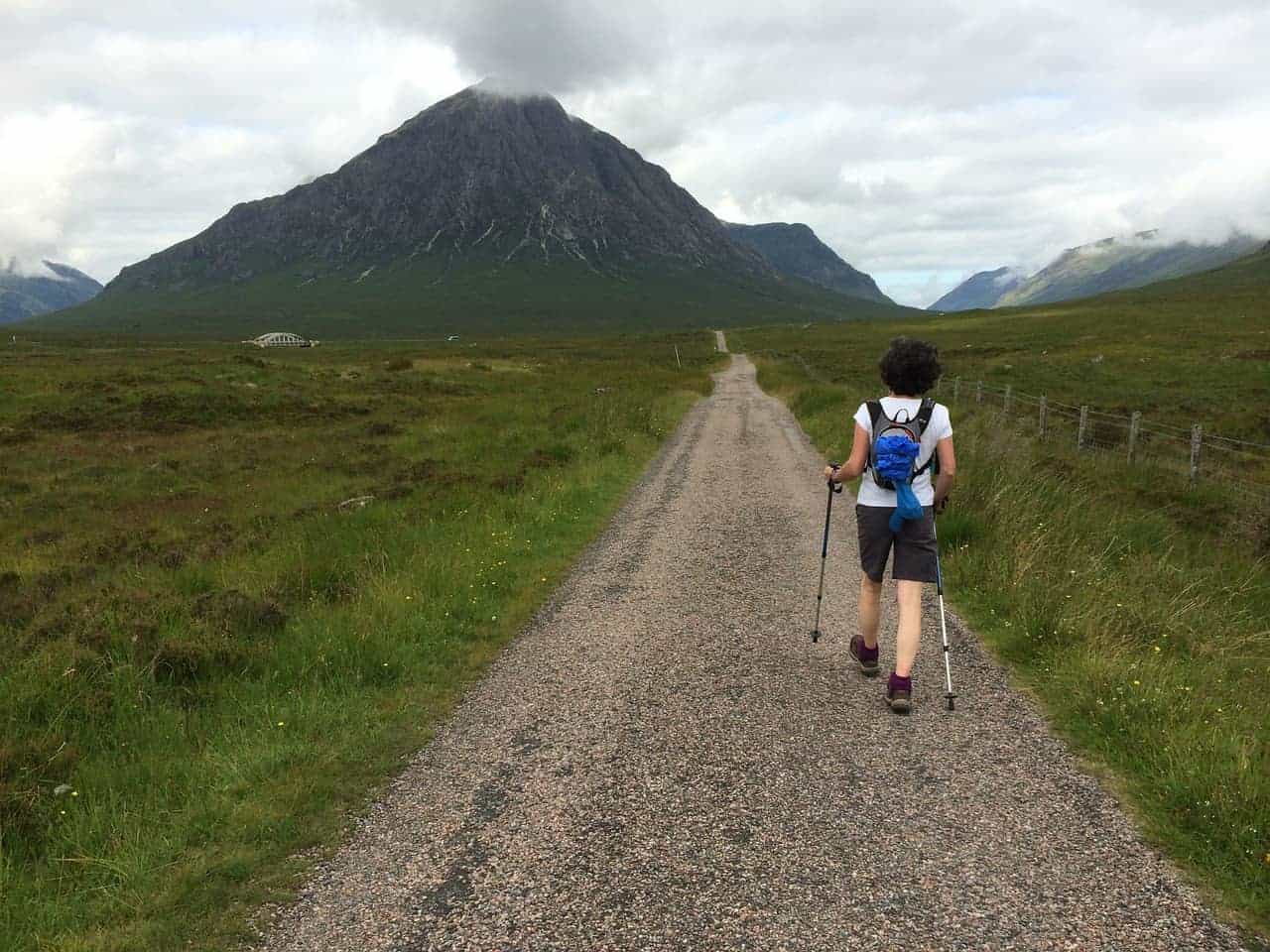
Can I Get Around Scotland Without a Car?
Quick answer – yes of course you can, as long as you’re prepared to sacrifice some comfort and are well-versed in the intricacies of Scotland’s public transport system. Long answer – It also depends on the amount of time you have and your level of personal fitness – but these are two factors that pale into insignificance against how much effort it’ll take to plan your journey.
It should be noted that there are a few instances where it’s preferable to ditch the car, such as when visiting Edinburgh or Glasgow.
Both cities have superb transport systems but getting around Edinburgh without a car is particularly easy thanks to the clean and efficient Lothian Bus network. Glasgow comes a close second with its underground SPT which is one of the oldest subways in the world, while above ground the main option is First Bus .
If you’re intent on travelling around Scotland without a car you’ll need to know exactly what other forms of transport are available, so let’s take a look at the best options in the sections below.
Travel Around Scotland by Air

Scotland is well-connected to the rest of the world thanks to the super-efficient airports you’ll find in the major towns and cities. From Edinburgh in the south to Wick in the north, It’s possible to fly into Scotland from most international airports, where you can then hop on board the country’s interconnecting public transport network.
Visitors will usually arrive via Glasgow, Edinburgh or Aberdeen – each of which services the main tourist hotspots – but there are smaller airports dotted across the furthest regions if you’re looking for a quick way to get around the country.
Most people don’t use air travel as the main way to explore Scotland as it means missing out on all the stunning scenery between the airports. However, I know from first-hand experience that it certainly has its uses, such as when you’re in Glasgow with a limited amount of time but want a quick visit to the west coast islands.
If you’re interested in visiting the west coast you should know that Loganair operates from all the main airports in Scotland and is currently the only carrier to service the most far-flung destinations of the country after rival airline Flybe collapsed in early 2020.
Loganair flies to the following airports:
The main departure airport for Scotland’s islands is Glasgow International, and example times to get there from Edinburgh are:
- By bus – approximately 2 hours 30 minutes via Glasgow Buchanan Bus Station.
- By train – tram to Edinburgh centre, train to Glasgow Queen Street, and bus to GLA is an approximate 2-hour journey.
Total ticket costs are similar, so expect to pay around £30 for the train and £25 for the bus. For updated times and prices see Scotrail (train) and Citylink (bus).
The table below gives examples of flight times to Scotland’s remote airports from Glasgow International.
Map of Airports in Scotland
Facts About Scotland’s Main Airports
Edinburgh airport. Address: Edinburgh EH12 9DN. Code: EDI.
Edinburgh Airport is the third busiest in the UK due to the number of international visitors that travel through it, and as an Edinburgh resident, I can confirm the queues are hellish during the peak tourist season. On the positive side, it’s a nice place to wait and you’ll find a good selection of shops and restaurants in the main terminal as well as the usual bars and coffee shops.
If you’re just passing through, you’ll be pleased to know the transfer services are first-class, with a regular airport bus (number 100) running every 10 minutes, 24 hours a day, to Edinburgh city centre. There’s also a tram station at the airport that runs into the city – plan for around 40 minutes – and there are taxi cabs stationed at the exit.
Glasgow airport. Address: Paisley PA3 2SW. Code: GLA.
Glasgow International Airport is around an hour’s train ride from Edinburgh and serves destinations worldwide, with upwards of 120 routes as of 2023. Due to the fact it’s the main hub for people travelling overseas it’s also horrendously busy in summer, but unlike Edinburgh, it seems able to handle the queues fairly efficiently.
There are regular bus links from Glasgow city centre as well as dedicated taxi ranks at the airport entrance, but if you’d rather take the bus then the First Glasgow Airport Express service 500 will take you to the airport from Queen Street and Glasgow Central station.
Aberdeen airport . Address: Dyce, Aberdeen AB21 7DU. Code: ABZ.
Anyone who wants to head straight onto a Speyside whisky tour or get their boots on for a trek into the Highlands should make their way to Aberdeen airport as it’s within easy distance of the Cairngorms (Aberdeen to the picturesque Highland town of Braemar is just 55 miles).
I wouldn’t plan on spending too much time in the airport as it’s mostly used by businessmen and offshore workers so it has a corporate feel about it, but thankfully the connections with the rest of Scotland are excellent.
Because Aberdeen airport is a popular business stopover you’ll find lots of hotels nearby including Jurys Inn , Premier Inn and Holiday Inn which are all within a few minute’s drive from the main terminal, while bus stops and taxi ranks can be found on the road directly outside the main entrance.
If you want to head into Aberdeen, First Bus Aberdeen has a dedicated No. 727 bus running every 10 minutes to the main bus and rail stations in the city. If you’d rather take the train, the nearest railway station is about 3 miles away at Dyce, where passengers will also find a taxi rank in the station car park.
Inverness airport . Address: Dalcross, Inverness IV2 7JB. Code: INV.
You’ll find this international airport at Dalcross, which is roughly 8 miles from the centre of Inverness . Although it’s much smaller than the other airports I’ve listed it still serves nearly a million passengers annually, mainly for the links to London and the north coast island airports at Sumburgh and Kirkwall.
Inverness is known as the capital of the Scottish Highlands so flying there makes sense if you intend on heading straight into a wilderness adventure, but bear in mind it only takes 4 hours to get to Inverness by train from Edinburgh, and the scenery along the way is extraordinarily pretty.
Inverness itself is a lovely city so you might want to spend a little time exploring it rather than rushing straight off to another destination, but if you’d rather hit the open road you’ll find a taxi rank directly in front of the airport terminal building. There are also bus stops that operate every 20 minutes from the airport to Inverness city centre, Nairn, and Elgin.
Travel Around Scotland by Train

We have a bit of a love-hate thing going on with trains here in Scotland. I personally really like travelling by train as it gives you the freedom to enjoy the scenery whooshing past the window without having to worry about roadworks and traffic jams, but I’ll be the first to admit our rail network is sorely lacking in a lot of areas.
First off, while they’re clean and usually on time, they’re also ridiculously expensive for longer journeys so you’d better get a second mortgage or rob a bank (…don’t rob a bank…) if you’re intending to spend an entire holiday travelling around the country by train using first-class tickets. To give you an idea, as of 2023, it costs around £50 for a single journey from Edinburgh to Inverness and the same to travel from Glasgow to Aberdeen, and you can double that if you want to upgrade to first class.
A bus meanwhile, costs around £25 for the same journey and takes almost the same amount of time. So that’s half the cost to get to the same destination. The bus is a no-brainer, right? Well, maybe, but if you’re on holiday the extra cost kind of makes sense.
For starters, train tracks are often miles away from urban areas and motorways so on some routes you’ll get to gaze at Scotland’s unspoilt wilderness up close in a way you’d never see if you were stuck behind a smoky lorry on the A9.
The second bonus of taking the train is that they’re totally direct from start to finish (apart from station stops) so there are no long detours around accidents and they’ll never get congested as our single-lane roads do. Simply sit back, press your nose against the window, and enjoy the ride while someone else does all the work for you.
My advice for using the train to explore Scotland on a holiday is to head over to the ScotRail website and order one of their travel passes which drastically reduces the cost compared to buying lots of individual tickets. They’ll also keep you on a selection of the most scenic routes as opposed to just choosing a random destination and hoping for the best.
An example price for ScotRail’s all-in-one tickets is the Highland Rover travel pass which gives you four days of unlimited travel in the North and West Highlands over eight days for around £100 using train, ferry, and coach travel. An alternative is the Spirit of Scotland travel pass which is the same price but covers the whole of Scotland.
I’ll list a few of my favourite and recommended Scottish railway journeys below.
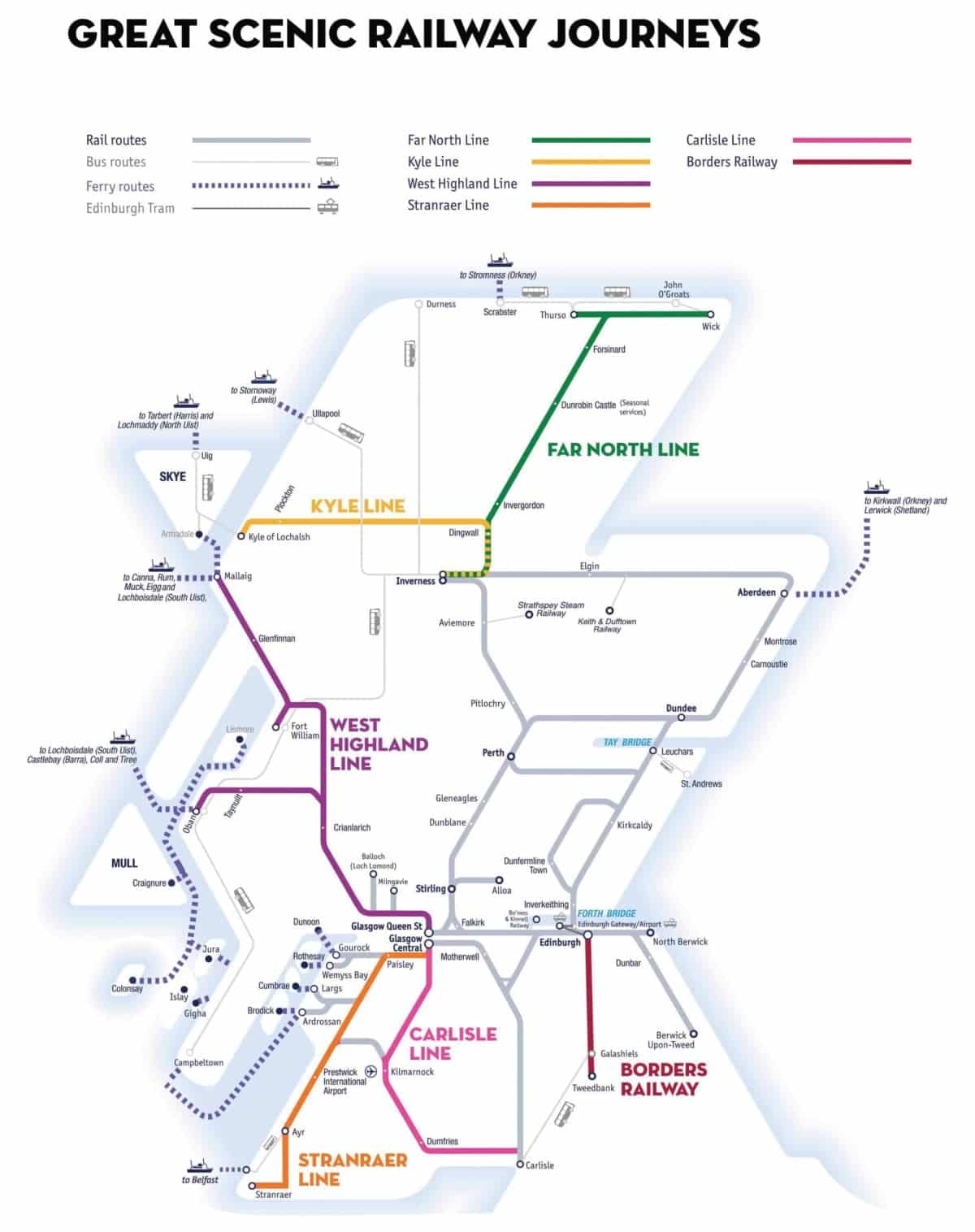
The West Highland Line.
- Journey time: 3 hours 50 minutes.
- Highlights: The Highlands gateway town of Fort William. Glenfinnan and the spectacular viaduct.
I was lucky enough to get a ticket for the Jacobite Express a few years ago which runs along the final third of the West Highland Line, so this railway holds a lot of special memories for me. Having completed the entire route from Glasgow to Mallaig I can confirm it’s jaw-dropping – especially the section at Glenfinnan – and it totally lives up to its title of being one of the most scenic rail journeys in the world.
The West Highland Line starts in Glasgow so getting to the first station at Queen Street is easy, but be warned that also means it gets busy in the peak tourist season (June to August) so you might not necessarily have the most relaxing of times. That being said, I travelled the length of it in October which was very quiet and I frequently had the carriage to myself.
If you’ve not heard of the Jacobite Express and Glenfinnan, it’s the bit in the Harry Potter movie where the Hogwarts Express goes over an enormous multi-arched viaduct. The Jacobite steam train ride from Fort William to Mallaig is privately run so you won’t be able to use a standard ScotRail ticket, but you can pre-book tickets through Get Your Guide which is one of the biggest tour ticket operators in the world.
The Far North line.
- Journey time: 4 hours 30 minutes.
- Highlights: Wick. Dunrobin Castle.
This railway operates between Inverness which is just north of the tip of Loch Ness to Wick which is just a few miles south of the northernmost point of Scotland at John O Groats . I travelled this route about a year ago and I have to say I enjoyed it, although it isn’t as scenic as the West Highland Line. Still, it’s attractive in its own way and it’s the best way to see this less-visited part of Scotland.
The stations in between the start and endpoints are a bit uninspiring (Invergordon and Forsinard aren’t much to write about) but it does at least stop at Dunrobin, so you can get out and visit the stunning Dunrobin Castle .
The final station at Wick is a bit grey, to be honest, but the coastline further north is spectacular and worth the journey alone, especially at the UK’s most northeast point at the Duncansby Stacks .
The Kyle Line.
- Journey time: 2 hours 40 minutes.
- Highlights: The Torridon Peaks, Achnashellach Forest, Ben Wyvis.
Whereas the Far North and West Highland lines stretch north to south, the Kyle line runs between them from east to west. This is a fantastic railway that easily rivals the tourist-favourite route between Fort William and Mallaig and you’ll see a gorgeous landscape of mountains and lochs from Kyle of Lochalsh to Inverness.
A recommended option is to complete the West Highland Line from Glasgow and continue on the Kyle Line to Inverness. It’s a bit of a trek between the end of the West Highland Line and the start of the Kyle Line as you have to go inland to Spean Crescent by rail before doubling back on yourself by road on the A87, but it’s a stunning journey.
Alternatively, you can take a ferry from Mallaig to Armadale on the Isle of Skye and then take the No. 52 and the No. 50 buses across the Skye bridge to Kyle of Lochalsh which takes around three hours. The only downside to this route is that Skye is so beautiful you won’t want to leave.
Travel Around Scotland by Bus
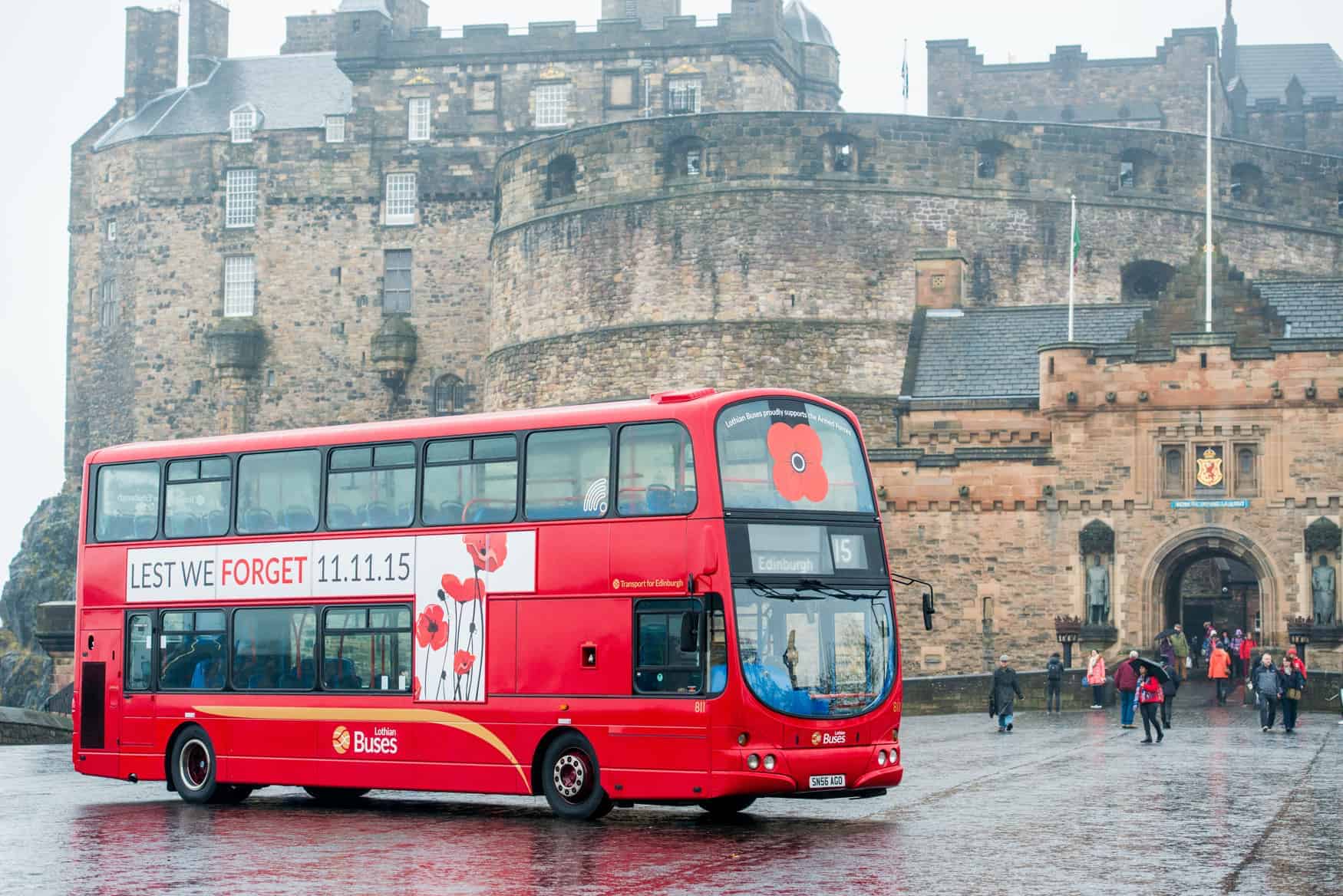
Other than cycling and walking, taking the bus is the cheapest form of transport in Scotland. You can quite easily hop on a Megabus in Edinburgh city centre and be in Aberdeen four hours later for just £20, depending on the time of day. That’s less than you’ll pay in petrol to drive the same distance in most cars.
The biggest negatives for taking the bus are the same as taking the car – traffic jams, road works, and winter road closures – but at least you can sit back in a big comfy seat while the driver deals with the tricky job of navigating Scotland’s twisty-turny roads.
If you’re thinking of using buses for long distances you’ll be well covered as the two biggest operators – Megabus and Citylink – operate from all the main cities as well as some of the smaller towns. In addition, both companies offer shuttle services between the centres of Glasgow and Edinburgh every 15 minutes.
It costs about £8 to travel between the two cities with the journey taking just over an hour, so it’s certainly worth considering if you want to explore the south of the country, but what about the north?
Well, to be honest, you’re in quite a good place if you choose to take the bus as you can easily get to Aviemore, Inverness, Aberdeen, Fort William, Perth, Pitlochry and Stirling, with each destination offering a bucket load of attractions for any visiting tourist.
Take a look at the table below for a guide to bus travel times from Edinburgh.
Pre-book bus tickets for a tour of Scotland directly from the Megabus website .
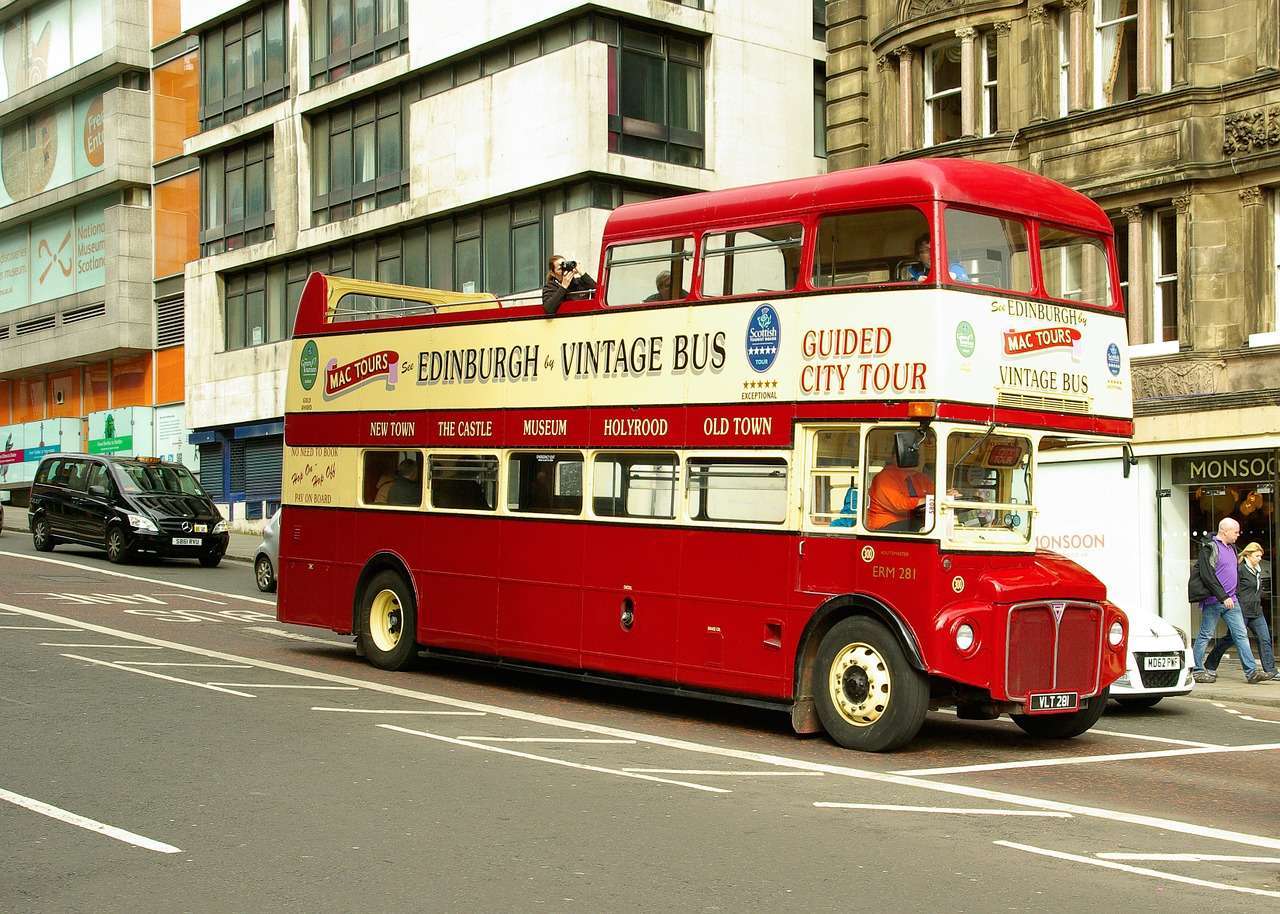
As far as fares go they’re already rock-bottom, but I’ve got a couple of tips that might help you save a little extra cash when booking your ticket.
1: Always book online and compare operators as you’ll often find competing discounts on their websites. An example of this is Megabus which currently has Edinburgh to Aberdeen on a standard ticket at £27 compared to the same journey on Citylink Gold (luxury coach, leather seats, complimentary snacks) for just £23. Same journey but very different experiences.
2: Book well in advance. The prices of tickets slowly creep up the nearer you get to the travel date so you’ll often save a packet by purchasing a few weeks beforehand.
3: On the other hand, if you book at the last minute you might be lucky and get a bargain seat if you take a chance and leave it till the hour before departure. Bus operators will often drastically reduce the price of unsold tickets in a last-ditch attempt to fill empty seats. In my experience, this tactic never works in summer when there are lots of tourists. Winter is a different story though.
4: Megabus is renowned for its special offers, so regularly check their website if you’ve got a destination in mind. Edinburgh to Inverness for a quid? Yes, please. Check out Megabus here .
Once you’re in the big cities, especially Edinburgh and Glasgow, you really don’t need any other form of transport, as the bus networks are so good. Edinburgh, in particular, has an incredible bus service operated by Lothian Buses which is almost always on time and has frequent buses that are spotless. I’ve been a lifelong worldwide traveller, and I can say hand in hand that Edinburgh’s bus and tram network rivals any other city worldwide.
Lothian Buses also have a great ticket system and you can either purchase books of tickets online or in the city centre travel shop, or you can use contactless payments with your bank card on the bus which means you never have to fumble about looking for change.
Visit the Transport For Edinburgh website for more information on Edinburgh’s trams and buses or download the Transport for Edinburgh App . To help you find your way around the bus network more quickly you can get real-time information on the web and on your smartphone.
- On computer: My Bus Tracker
- On mobile: My Bus Tracker
Glasgow is a slightly different story as the service is run by First Bus and I’ve always found their buses to be a wee bit grubby – although at least they’re cheap and there are lots of them. With that in mind, if you’d like to explore Glasgow by bus your best option is to book a hop-on hop-off bus ticket which will allow you to visit all of the main attractions on a tour bus that runs around the city in a loop all day long.
See below to book your tickets.
Once you’re away from the city you’ll find Scotland’s buses revert to something similar to the transport system they had in medieval times, which is to say it’s virtually non-existent.
Because the Highlands and the far north are so lightly populated, it doesn’t make much sense for bus companies to run extensive services, so you’ll frequently find villages with only one or two buses per day. That makes it almost impossible to tour the Highlands by bus, as you’ll have to plan your journey between stops to perfection or risk waiting 12 hours for the next one to come along.
And even worse, fewer buses mean fewer bus stops, so don’t be surprised to find the nearest stop miles away from whatever wee village you want to spend the night in.
One option I have for you if you want to explore Scotland by bus is to book yourself onto one of the excellent Rabbies small group coach tours which head out to pretty much every single corner of Scotland. I’ve only ever heard good things about Rabbies as not only are the drivers expert guides full of local knowledge but they only use small coaches so you’re never stuck in the middle of a massive crowd of strangers.
If you’d like to take a look at the tours Rabbies have to offer check out this link .
Aside from Rabbie’s coaches, my advice for using buses to explore the wilds of Scotland is don’t bother, but that’s ok because you can take my two favourite forms of transport instead – bicycle and feet.

Travel Around Scotland by Bicycle
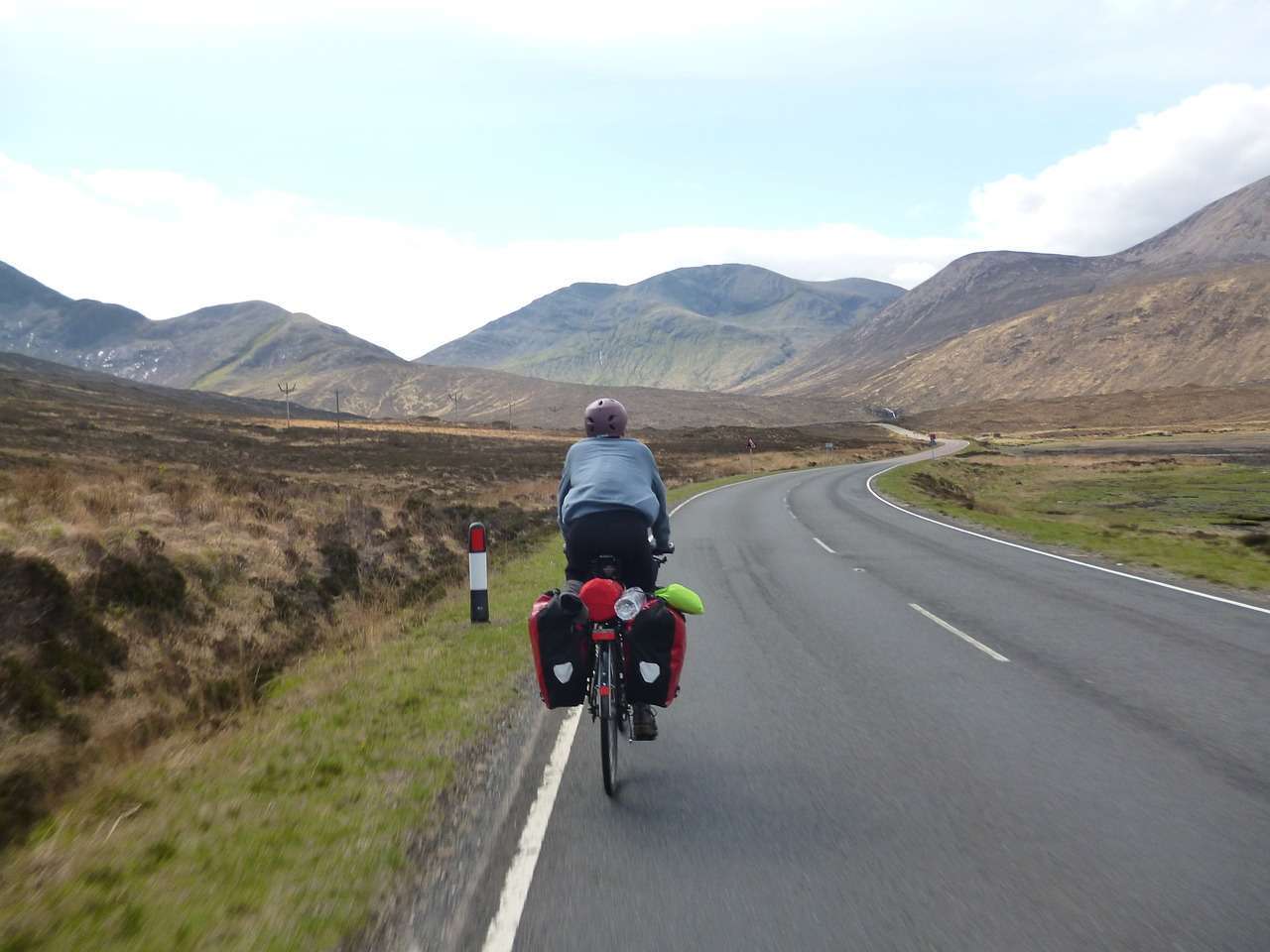
Spending just one week in Scotland without a car can be a frustrating experience – unless you happen to be travelling by bike. One of the great things about Scotland is the vast cycle network which threads its way like a spider’s web across every part of the country.
There are 2,371 miles of National Cycle Network routes in Scotland and almost a third of them (644 miles) use traffic-free paths that comprise a mix of disused railway lines, canal towpaths, forest roads, and segregated cycle lanes.
Although I’m a firm believer that walking is the best way to immerse yourself in the landscape I have to say cycling comes to a very close second place, with the bonus that you can clock up many more miles on two wheels than you can on two feet. On a sunny day there’s surely no better way to experience Scotland’s iconic castles , shimmering lochs and peaceful forests than by sitting on a bike.
The custodians of Scotland’s National Cycle Network is the charity Sustrans and they’ve gone to remarkable lengths to ensure you can enjoy a long-distance ride in safety. They’ve also mapped Scotland’s cycle routes in conjunction with OS maps, so before jumping in the saddle I recommend checking out the OS maps website to get an idea of where you can go.
Many of the Sustrans cycle routes connect the major cities so it’s perfectly possible to spend a completely car-free holiday in Scotland as long as you have your trusty bike with you.
If you’re into wild camping you’ll have the best of both worlds as you can combine a venture into the great outdoors with the occasional trip into the urban areas and if you’re thinking of island hopping you’ll have an absolute blast on two wheels.
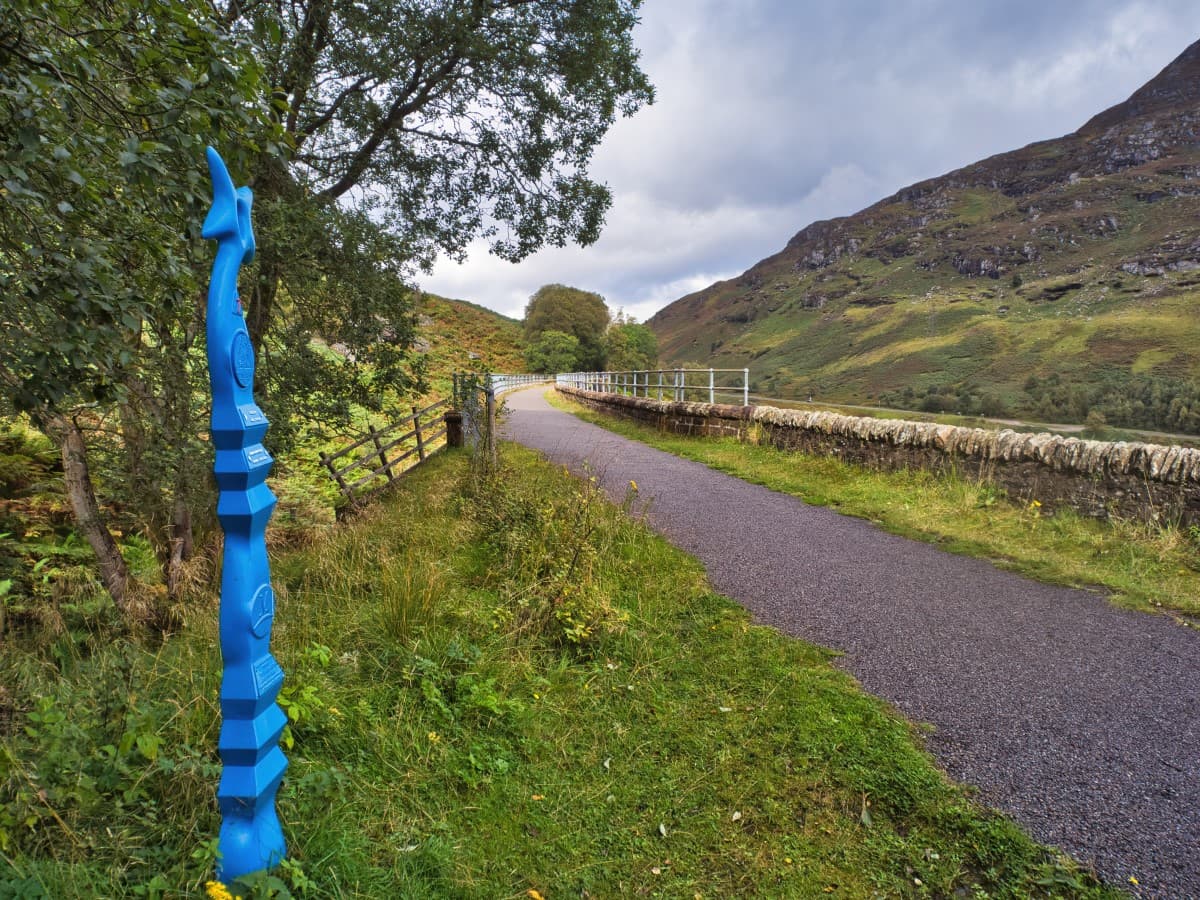
Most of the cycle paths in the country are wide and pothole-free so you can cycle for miles in relative comfort, and coupled with the fact you’ll be keeping healthy and travelling for no cost (unless you’ve hired your bike), a cycling holiday is definitely one that should be considered if you want to explore Scotland without a car.
Although it’s easy to use the Sustrans cycle network in Scotland there are a few tips I’ll give you before exploring the best routes. You’ll need to take note of them if you’re an international visitor who isn’t used to Scotland’s roads.
1: Each cycle route is numbered and you can work out which route to take by examining the Sustrans OS website and then keeping an eye open for the roadside signage.
These signs are blue with an arrow pointing in the direction of the route along with an icon of a bike and/or a person walking (indicating the route is suitable for bikes and/or walkers). The signs also have a red box with a white number which relates to the number of the cycle route.
2: If the red boxed number is in brackets, it means you’re heading towards the route. If the number has no brackets, it means you’re on the route.
3: Some signs also have the name of the route in white lettering inside a brown box.
4: Cycle paths that are joint walking/cycling are usually split in half, with icons and separating lines indicating which side of the path to cycle or walk on.
5: If you’re cycling at night, be aware that working front and rear lights are mandatory in Scotland and you must have a bell on the handlebars to warn pedestrians of your approach.
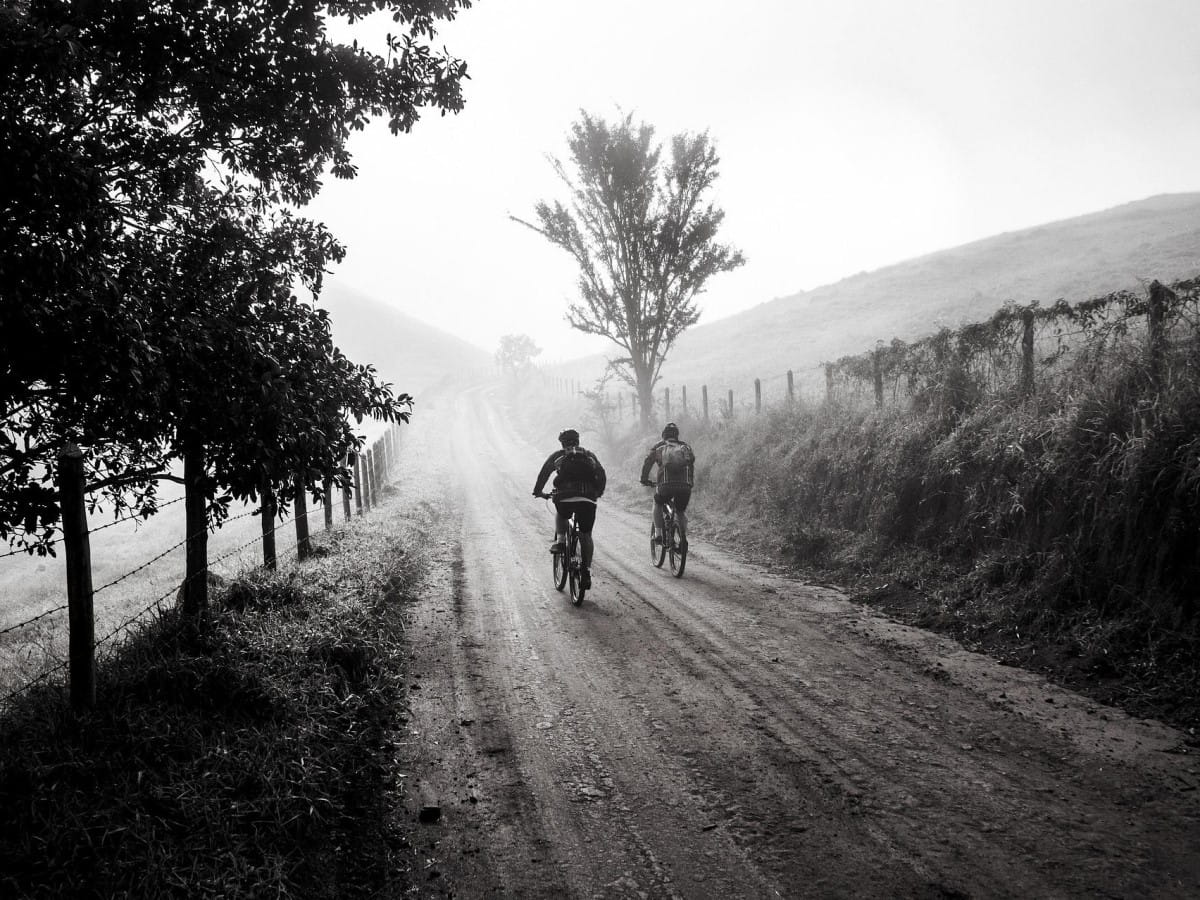
6: Because large parts of the cycle network run into the furthest reaches of Scotland, you must ensure you have a map so you don’t deviate from the designated route. I have OS maps loaded onto my phone and always take a rechargeable power pack (Amazon link) with me. You can order Ordnance Survey maps online here .
7: Another necessity is to make sure you pack a puncture repair kit, spare inner tubes, a hand pump, basic tools like Allen keys and an adjustable spanner, and additional clothing and a lightweight tent in case you unintentionally get stuck outdoors in the middle of nowhere.
Here’s an Amazon link to the all-in-one bike repair kit that I bought last year.
8: Following on from the above, pack plenty of food and water as well. Some stretches of the Sustrans cycle network are miles from any towns and villages so you can quite easily find yourself without any facilities for hours at a time.
Now we’ve got the necessities out of the way, let’s take a look at some of the amazing cycle routes we have in Scotland.
Caledonia Way . 234 miles (377km) from Campbeltown to Inverness. Cycle path No. 78.
The Caledonia Way runs from Campbeltown on the west coast to Inverness across a variety of terrains. This cycle route is a favourite with British cyclists as it showcases the best of Scotland’s dramatic Highland scenery with a series of incredible views of west coast islands and dramatic coastlines.
Beginning at Campbeltown, you follow the Kintyre Peninsula and the Great Glen Way where you’ll pass two of Scotland’s greatest natural wonders at Loch Ness and Ben Nevis.
The only downside (depending on how off-grid you want to get) is that the 120-mile section between Campbeltown and Oban is on roads, though it does change to a traffic-free path once you pass Oban and get on the section that leads to Fort William. Expect the entire 234-mile route to take 20 hours on a bike.
Hebridean Way . 184 miles (296km) from Vatersay to the Butt of Lewis. Cycle path No. 780.
If you want to escape the mainland and explore the west coast islands there’s no better place to take your bike than the Hebridean Way which winds through the spectacular wilderness of the Outer Hebrides.
Starting at the remote island of Vatersay you’ll island-hop by ferry towards Harris and Lewis with the final destination 15 hours away at the Butt of Lewis. This is one of the wildest, most windswept and utterly captivating regions of Scotland, and it’s the perfect antidote to the hustle and bustle of modern city life.
Because the Outer Hebrides are so lightly populated you’ll need to ensure you take plenty of provisions with you and have a backup plan in case you get lost as mobile phone coverage is sketchy at best. Even so, the views are utterly spectacular and the Isle of Harris has some of the most beautiful beaches you’re ever likely to see.
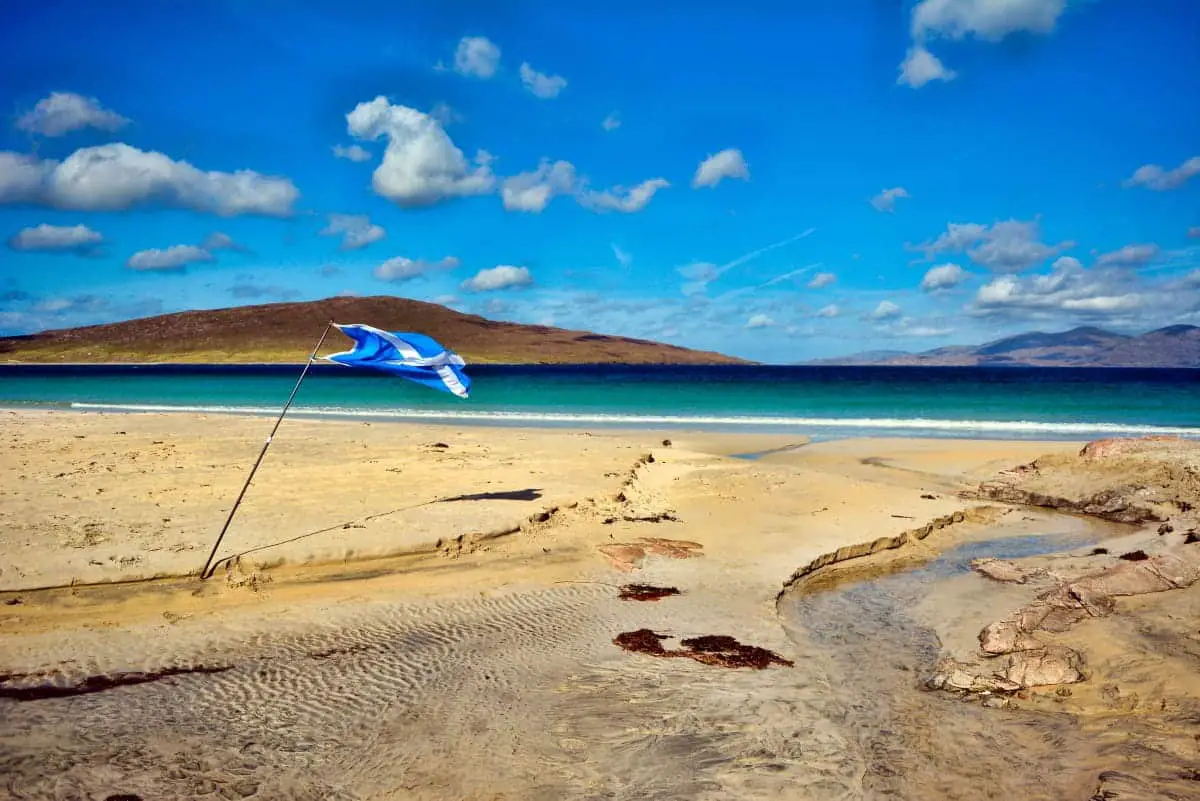
Coast & Castles North . 172 miles (276km) from Edinburgh to Aberdeen. Cycle path No. 1.
Aberdeenshire is known as the ‘ castle county ‘ so it’s not surprising that Sustrans created a cycle route that showcases a few of the most impressive fortresses in Scotland.
This route starts in historic Edinburgh before taking cyclists on a long-distance adventure across Fife and up the north coast towards the ‘granite city’ of Aberdeen. The coastline along the way is amazing and you seem to stumble across castles every few miles, but I have to say the best (in my humble opinion) is Dunnottar Castle which lies about 18 miles south of Aberdeen on a rocky outcrop that overlooks the North Sea.
It’s a real spectacle but there are lots of other highlights on this journey like the famous Forth Rail Bridge and the gorgeous countryside between Dunfermline and Dundee. Plan on taking 14 hours of uninterrupted cycling to complete this cycle route.
Edinburgh to Glasgow . 57 miles (92km) from Edinburgh to Glasgow. Cycle path No. 75.
As I’m lucky enough to live in Edinburgh this cycle route is right on my doorstep and I’ve lost count of how many times I’ve been on it, which is why I’m recommending it along with the more remote cycle trails above.
You might think that travelling between Scotland’s two biggest cities would mean you’d be stuck on boring urban roads, but you couldn’t be further from the truth as this route crosses an extraordinarily attractive region of Scotland where cyclists will enjoy picturesque meadows, gentle canals, and peaceful woodlands.
Starting in Edinburgh, the route passes Livingston (great shopping mall), Bathgate, Coatbridge, and Uddingston before veering towards the River Clyde and the final destination at Glasgow city centre.
So not only do you get to admire the sights of the two great cities but you get to enjoy central Scotland’s picturesque landscape as well. You’ll even pass two nature reserves – Bogburn Flood Lagoons Nature Reserve and Blawthorn Moss National Nature Reserve. The entire route should take around ten hours to complete on a bike.
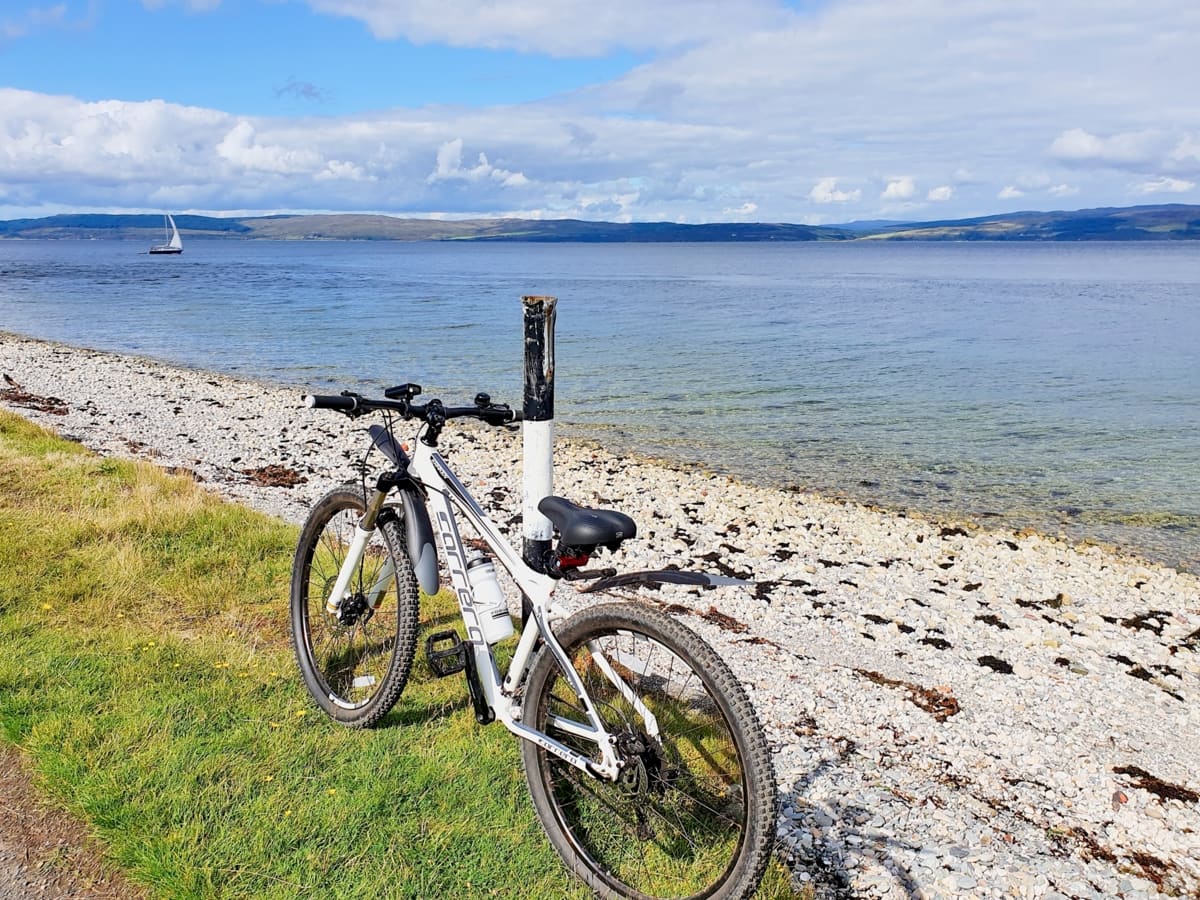
Five Ferries cycle route . Brodick-Lochranza, 14 miles. Claonaig-Tarbert, 10 miles. Portavadie-Colintraive, 19 miles. Rhubodach-Rothesay, 8 miles. Wemyss Bay-Ardrossan, 18 miles.
The CalMac Five Ferries cycling route is a popular and scenic adventure that takes cyclists on a journey through the most beautiful landscapes of the Scottish west coast. This unique route combines five ferry crossings (hence the name) and combines cycling on the mainland along with several islands, covering a total distance of approximately 69 miles (111 kilometres).
The journey begins at Ardrossan on the mainland where you’ll take the first ferry to the Isle of Arran . Once on Arran, you can explore the island’s picturesque villages and coastline (see my guide to the Arran Coastal Way ), before hopping on the next ferry that takes you from Lochranza on Arran to Claonaig on the Kintyre Peninsula.
On the Kintyre Peninsula, you’ll cycle along quiet roads to the third ferry that takes you from Tarbert to Portavadie on the Cowal Peninsula where you’ll continue cycling through unspoiled countryside next to the Kyles of Bute and Loch Ruel.
The fourth ferry journey is from Colintraive to Rhubodach on the Isle of Bute. The Isle of Bute features a range of attractions including sandy beaches and lush woodlands so cyclists might like to book an extra night to explore the entire island.
The final ferry takes you from Rothesay on Bute back to Wemyss Bay on the mainland where you can then cycle the A78 back to the starting point at Ardrossan. The route is suitable for both experienced and novice cyclists, but as it has a mix of flat and hilly terrain, it’s recommended to complete it over at least two to three days to fully enjoy the sights along the way.
Travel Around Scotland by Walking
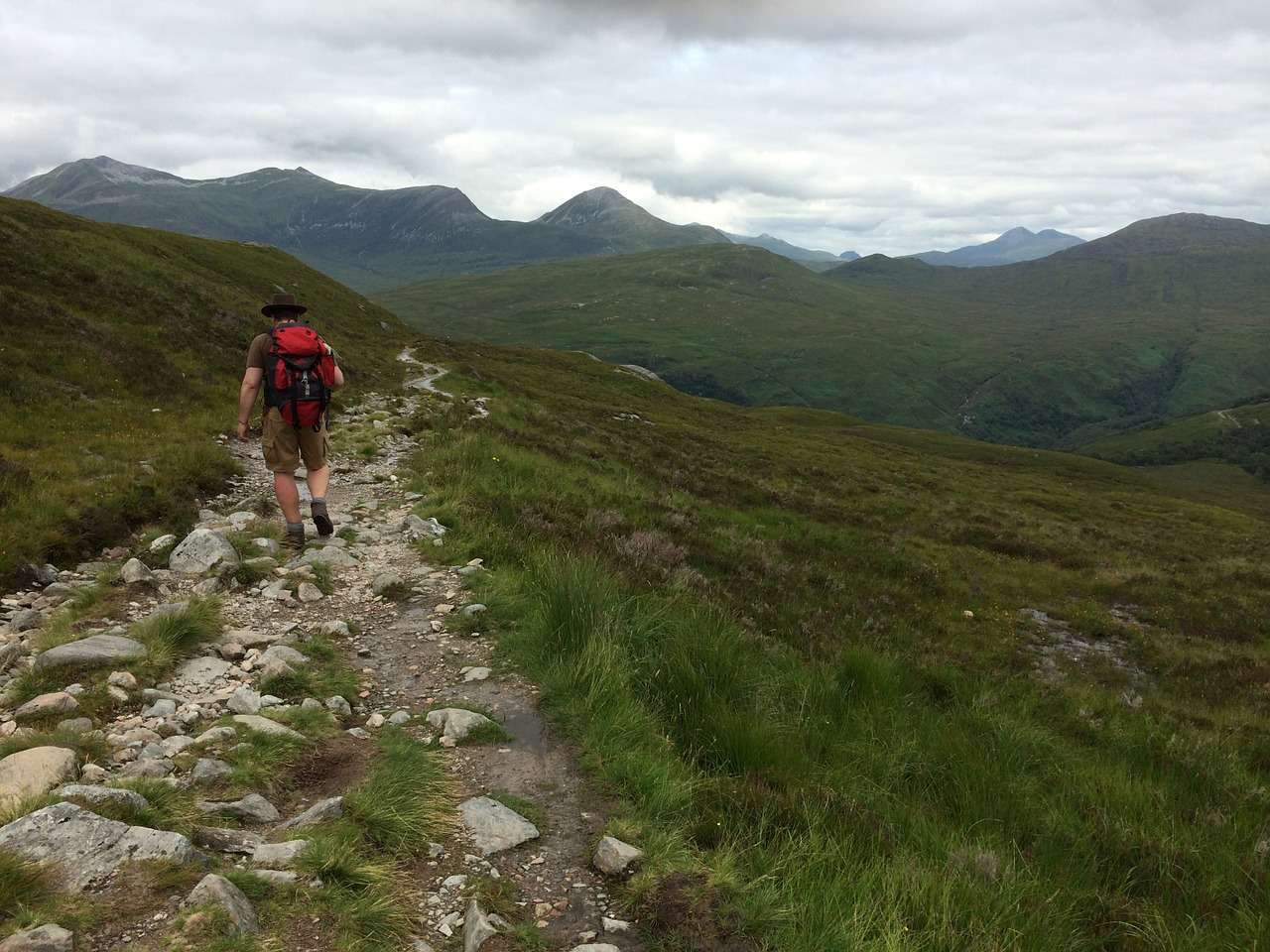
This last method of travelling around Scotland without a car is possibly the hardest but it’s also the cheapest – using your own two feet. Hiking in Scotland is a popular activity thanks to superb walking trails like the John Muir Way and the West Highland Way that are largely off-road and almost entirely free of traffic.
These trails allow you to explore the length and breadth of the country from the coastline to the mountains at your leisure, and due to the fact each has its own website you can easily plan whether to combine the trails, just do one short section, or embark on an epic hike across hundreds of miles.
Many of these walking routes follow the same pathways that cyclists follow but there are a few that are only accessible on foot like the ones that run off-track through Scotland’s mountains and remote Highland areas. Before you set out on a long-distance hike you need to take a few simple precautions which aren’t too much of a necessity in the Lowlands but are vital if you’re thinking of trekking at higher altitudes.
1: Prepare for bad weather even if it’s the middle of summer. The number of tourists that get lost in the Highlands is astonishing, and the Scottish Mountain Rescue Service is constantly called out to retrieve unprepared walkers who decided it was a good idea to hike Ben Nevis in flip-flops or camp overnight in a T-shirt.
2: Following on from the above, if you’re setting off on a hike into the wilds – even if it’s the middle of summer – make sure you’ve got a spare set of dry clothes as the wind chill on wet clothing can easily cause hypothermia. I never go hiking without my trusty waterproof backpack (Amazon link) which has never let water inside even during the most ferocious downpours (see my recommended backpacks ).
3: Never, ever set off without a map. It’s very easy to get lost in the Highlands, and because the area is so vast you’ll often find you’re the only person for miles around. You can download maps onto your phone but bear in mind batteries don’t last forever so you’ll need to take a power pack with you. This one (Amazon link) is tiny, weighs almost nothing and easily fits into my backpack side pocket. As a backup, I recommend you get a paper OS map. Buy OS Explorer Maps direct from Ordnance Survey.
4: If you’re visiting from overseas you should know that throughout Scotland’s wilderness are a collection of shacks, huts and wee buildings known as ‘bothies’. A bothy is a place where you can take refuge from the elements if you find yourself in the middle of nowhere with no camping equipment, and they’ve saved countless lives over the years. The best resource to learn about them is The Scottish Bothy Bible by Geoff Allan.

Best Walking Trails in Scotland
Now let’s take a look at a selection of the best walking trails in Scotland.
The John Muir Way . This trail stretches 134 miles across Scotland’s heartland from Helensburgh on the west coast to Dunbar on the east, and I’m including it first because it’s my absolute favourite walking route in Scotland (admittedly I’m biased because I live on part of it).
The John Muir Trail is dedicated to the founder of America’s great national parks including Yosemite Valley and Sequoia National Park. John Muir lived most of his life in the U.S. but he was born in the East Lothian town of Dunbar.
Crossing vast stretches of pristine countryside, tranquil lochs, peaceful woodland, and glorious coastline, the John Muir Way allows visitors to see all the best bits of Scotland in a relatively compact area. Unlike the trails that meander through the Highlands, this walk takes you close to the cities of Glasgow and Edinburgh so you can quite easily spend a little time exploring the best urban attractions before getting back on the trail.
You can choose to do the separate sections that are detailed on the John Muir Way website or do what many hikers prefer and complete the entire route in one go. Expect to take 9-11 days to walk all of it.
The West Highland Way . This route celebrated its 40th birthday in 2020 so there’s a big push to advertise it to tourists – not that it needs much advertising as it’s arguably the most popular walking trail in Scotland.
Stretching 96 miles from Milngavie to Fort William, it passes through some of the most beautiful parts of the Highlands including Loch Lomond , Glen Etive , and Ben Nevis. It’s an absolutely jaw-dropping journey at every step of the way and has to be attempted if you’ve got any interest in exploring the landscapes of Scotland’s west coast.
It’ll take around 7 days to complete the entire route depending on your level of fitness, but as it’s so far off the beaten track you’ll need to arrange some form of overnight accommodation, whether that’s a tent or pre-booked B&Bs. Just be aware that as the trail is so busy in summer it’s almost impossible to find a vacancy unless you pre-book several weeks in advance.

The Southern Upland Way . This is another coast-to-coast route in southern Scotland but it’s very different to the John Muir Way as it doesn’t get close to any built-up areas and instead lets you concentrate on exploring the countryside of the Lowlands in all its glory.
It’s a long trail at 214 miles so completing it in its entirety is best left to seasoned walkers, but it can be broken down into smaller sections and returned to at a later date which is what the majority of hikers tend to do.
Starting in Portpatrick on the southwest coast, you pass through much gentler and easier-going landscapes than you’ll find on the West Highland Way, though some hill sections rise to more than 2,000 feet. However, it’s not the elevation that catches out unwary walkers it’s the duration, with stretches like the 25 miles between St. Johns Town of Dalry and Sanquar being very hard on the feet.
It’s for this reason I suggest you break the walk into two sections with the first from Cockburnspath to Moffat taking a week and the second section from Moffat to Portpatrick taking another week.
The Great Glen Way . My last recommendation is the Great Glen Way which starts in the Highlands gateway town of Fort William and finishes in the Highland capital of Inverness – two towns that are worth visiting whether you intend to complete the entire route or not.
The Great Glen is the longest glen in Scotland (a glen is a valley) and it more-or-less follows the line of the Great Glen Fault . This walking trail is one of the most northern, so it’s a little less used than the others and some sections make you feel like you’ve gone off-grid, especially once you get past the village of Drumnadrochit.
Even though it’s a remote trail I have to say the sections I’ve walked are very easy as a lot of the paths are either forest tracks, canal towpaths, or purpose-built paths – but that’s not to say it’s all easy-going and you’ll find some sections ascend to nearly 1,400 feet.
The highlight of this 77-mile walk is Loch Ness which is even prettier in real life than the tourist guidebooks would have you believe. My advice is to take a slight detour off the trail once you get near Drumnadrochit and go visit Urquhart Castle which is an impossibly picturesque ruined castle with amazing views over the loch and a first-rate visitor centre.
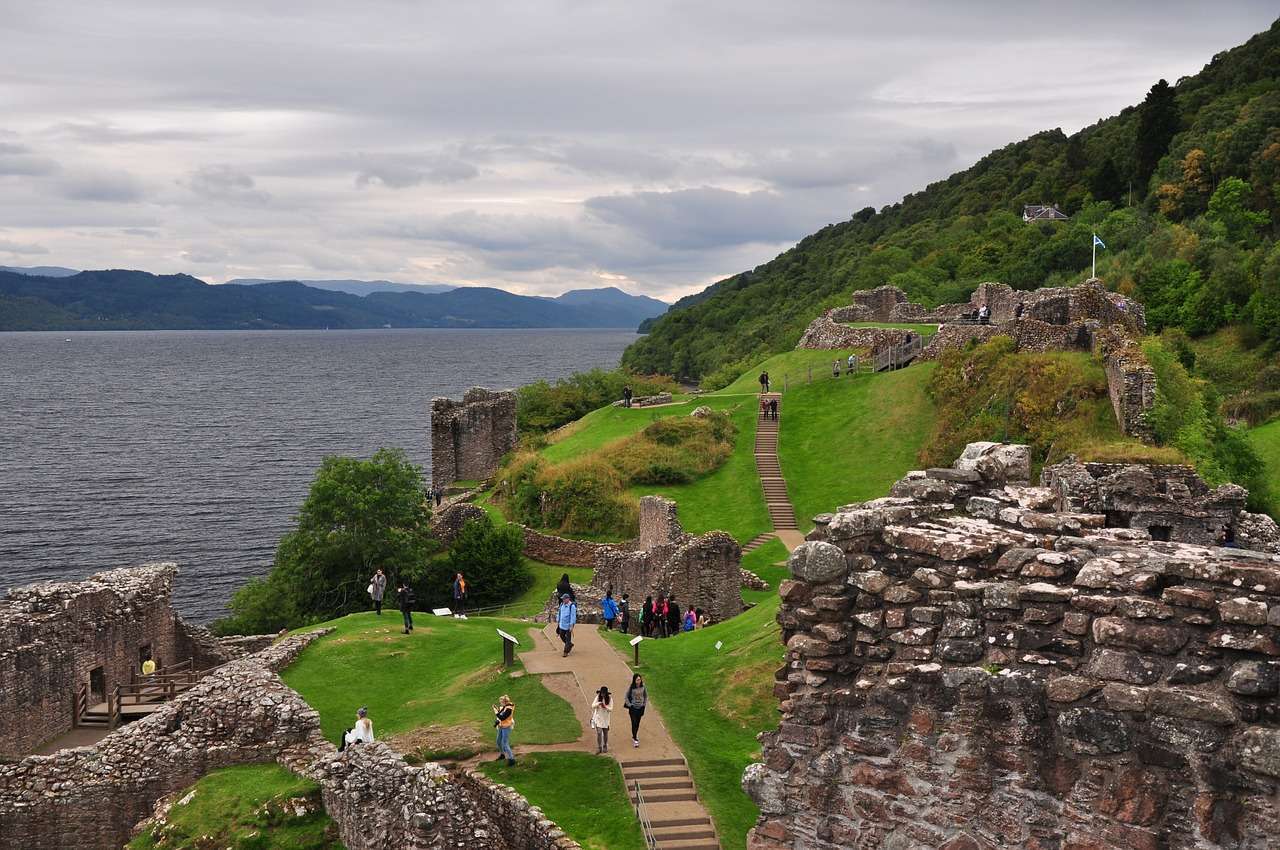
Resources for Air Travel:
- Skyscanner – The premier internet flight booking website.
- Loganair – Scotland’s main airline for travelling to remote airports.
- Flightstats – Flight tracking website.
Resources for Train Travel:
- ScotRail – Scotland’s rail network. Pre-book tickets and passes directly from their website.
- Caledonian Sleeper – Luxury overnight train service between London and Scotland.
- Traffic Scotland – Mainly car travel information but also has links to rail information pages.
- West Coast Railways – Operators of the Jacobite Express.
Resources for Bus and Coach Travel:
- Rabbies Coach Tours – Recommended small group coach tours.
- Citylink – Coach travel company.
- Megabus – Coach travel company.
- First Bus – Bus operator throughout Scotland.
- Lothian Buses – Edinburgh bus operator.
- City Sightseeing – Open-top tour bus operator.
Resources for Cycling:
- Sustrans Cycle Network – Charity that maintains Scotland’s cycle trail network.
- Komoot – Cycle travel planning app.
- Forest and Land – Official forestry website with details of forest cycle paths.
Resources for Walking:
- UK Campsite – Lists campsites in Scotland and the rest of the UK.
- Walk Highlands – the best resource for finding walking routes in Scotland.
- Scotland’s Great Trails – Details all of Scotland’s walks in one website.
- Google Maps – Still the best digital mapping service.
- Ordnance Survey Maps – The best paper maps. These are a necessity.
Frequently Asked Questions
Where are the airports in scotland.
Aberdeen, Barra, Benbecula, Campbeltown, Dundee, Edinburgh, Fair Isle, Glasgow, Inverness, Islay, Orkney, Shetland, Stornoway, Tiree, Wick.
How much does it cost to travel by train in Scotland?
As of 2022, it costs around £45 for a single journey from Edinburgh to Inverness and the same to travel from Glasgow to Aberdeen with a Scotrail standard ticket. Prices can double by upgrading to a first-class ticket.
Which are the best train lines to tour Scotland?
The West Highland Line – Glasgow to Mallaig. The Far North Line – Inverness to Wick. The Kyle Line – Inverness to Kyle of Lochalsh. The Carlisle Line – Carlisle to Glasgow. The Borders Line – Tweedbank to Edinburgh. The Stranraer Line – Stranraer to Glasgow.
How long do bus journeys take in Scotland?
Examples from Edinburgh: Aberdeen – 3 hours, Aviemore – 3 hours 30 minutes, Fort William – 4 hours 30 minutes, Inverness – 4 hours, Perth 1 hour 30 minutes, Pitlochry – 2 hours 20 minutes, Stirling – 1 hour 30 minutes.
Is it possible to go island hopping in Scotland without a car?
Yes, it is possible to go island hopping in Scotland without a car. Many of the islands in Scotland are connected by ferries and it’s possible to book tickets as a foot passenger with or without a bike for a fraction of the cost of taking a car.
The main ferry operator in Scotland is Caledonian MacBrayne (Calmac) which lists details of timetables and ticket prices on its website.
The Outer Hebrides is the best option for a car-free tour but I’d advise against an Isle of Skye tour on foot as many of the roads have fast-moving traffic.
Related Posts

A Guide to Scotland’s Winter Weather

How Much Should You Tip in Scotland?

How to Save Money on Train Tickets in Scotland

How to Prevent Tick Bites in Scotland
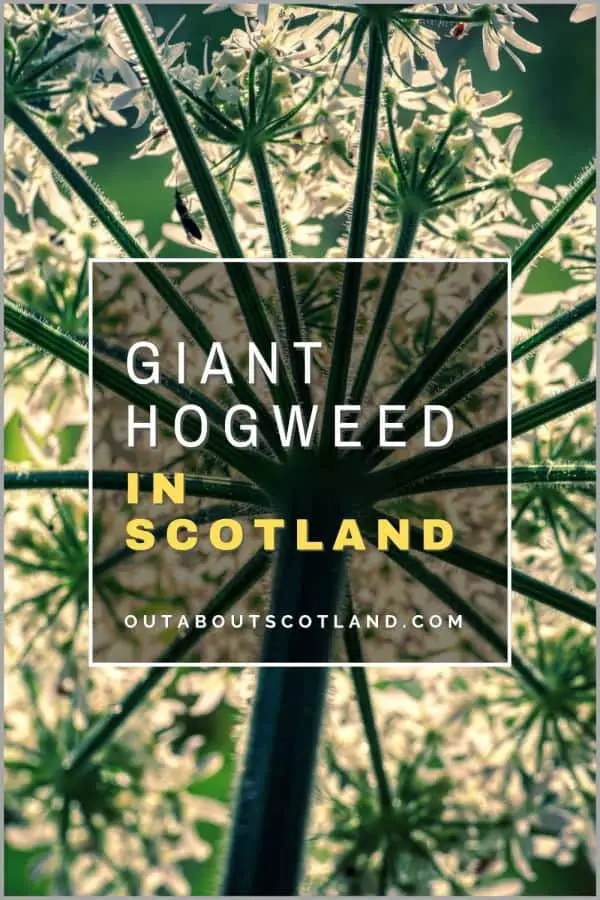
A Guide to Giant Hogweed in Scotland
Craig Neil is the author, photographer, admin, and pretty much everything else behind Out About Scotland. He lives near Edinburgh and spends his free time exploring Scotland and writing about his experiences. Follow him on Pinterest , Facebook , and YouTube .
Smart options
Already operating smart.
There are many options for traveling smart in Scotland. The vast majority of the public transport network is now covered by smartcards , m-ticket mobile apps or smart payments.
Scroll down to see which operators are operating smart and click to find out more.
Scottish ITSO Smartcards
Scottish ITSO smartcards can now be used to store tickets for travel across multiple modes of transport and multiple transport operators. This means you can now travel on bus, rail and subway using just one ITSO smartcard, rather than needing separate smartcards or paper tickets for each operator.
Depending on the operator, tickets can be loaded onto your chosen ITSO smartcard at ticket offices, ticket vending machines, on board or in advance online and can be paid for with cash, card or contactless.
There are many ITSO smartcard options available to you. For more information, click on a Scottish ITSO smartcard below.
Or to find out which smartcard works best for you, complete our short Which Option? questionnaire.

National Entitlement Card (for 60+ and disabled)
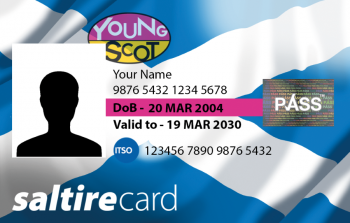
National Entitlement Card for Under 22s
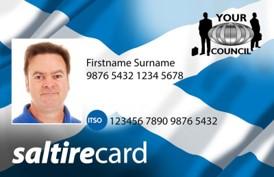
National Entitlement Card (basic)
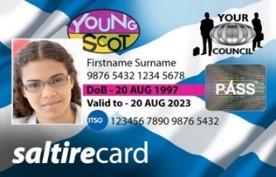
Young Scot Card

Eve Travel Card

GlasgowTripper

GrassHOPPER
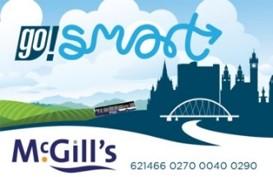
McGill's Go!Smart

Modern Apprentice Smartcard

Moffat & Williamson
Prentice of Haddington Smartrip

Shiel Smartcard

ScotRail Photo Smartcard

ScotRail Non-photo Smartcard

ScotRail Club 50 Smartcard
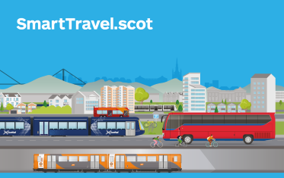
Smart Travel Smartcard

Stagecoach Smart

Subway Smartcard

Subway Anonymous Smartcard

Xplore Dundee card
Non-ITSO travel cards
Depending upon where you live in Scotland and your travel needs, a non-ITSO travel card may be the most suitable option to meet your travel needs
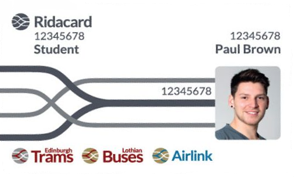
Lothian Ridacard

SPT ZoneCard
TransPennine Card
M-ticket apps
Transport operator M-ticket apps often offer the convenience of being able to plan your journey, purchase and store tickets, keep up to date with live travel information and more all in one place. However, they can only be used with that operator and cannot be used for travel on other modes or with other operators.

Borders Buses app

Caledonian Sleeper app

Cross Country app

First mTickets app

McGill's Buses app

Next Bike Glasgow app

Next Bike Stirling app

One-Ticket app

Prentice of Haddington app

ScotRail app

Stagecoach app

TfE M-tickets app

TransPennine App

Xplore Dundee app
Smart payments
Many operators now offer you the convenience of purchasing tickets by smart "contactless" payments - so no more fear of having to have the exact change! Simply tap your contactless credit / debit card or mobile device to buy your ticket.
Contactless payments are available on these transport operators.
For more benefits, please see the "Why travel smart?" video on "The basics" page at the link below
- International edition
- Australia edition
- Europe edition

Rail passengers face rolling strikes but London Underground action called off
Aslef members start three days of 24-hour strikes from Friday but tube driver action cancelled
Rail passengers are bracing for travel disruption as train drivers bring some routes on the national network to a halt in a wave of strikes, but two days of similar action on the London Underground have been called off.
On Friday, members of the union Aslef start the first of three 24-hour strikes that will affect 16 rail operating companies in England as part of its 20-month dispute over pay.
However, on Thursday Aslef called off two daylong tube strikes planned for the following Monday and Saturday 4 May after receiving a proposal from Transport for London that it said resolved the key issues in the dispute.
The run of single-day national network strikes starts on Friday with drivers working for Avanti West Coast, East Midlands Railway, West Midlands Trains, London Northwestern Railway and CrossCountry. All five operators will run no services on the day.
On Saturday, strikes will take place on Chiltern, GWR, LNER, Northern and TransPennine, while on Monday services on Greater Anglia, GTR’s Great Northern, Thameslink and Southern/Gatwick Express, Southeastern, South Western Railway and SWR Island Line will be cancelled.
Passengers have been warned by operators to expect significant disruption, with most trains cancelled on the strike days. Services on the days before and after the strikes could also be affected. Drivers in Scotland and Wales are not on strike but cross-border rail services will be disrupted.
The strikes coincide with an overtime ban by the union for all operators, which runs from 4 to 6 April, and then 8 to 9 April. It is expected that it will make short-notice cancellations and disruption more likely when travelling on these days.
Announcing the cancellation of the London Underground strikes, an Aslef official said: “Management have confirmed that they have disbanded their ‘trains modernisation’ team and will not be implementing their plans to change drivers’ working arrangements without agreement. They have also agreed to reinstate annual refresher training stopped during the pandemic.”
Train drivers have already held 13 one-day strikes since the dispute started in 2022.
Speaking after the vote last month , Aslef’s general secretary, Mick Whelan, said: “Our members voted overwhelmingly – yet again – for strike action.
“Those votes show – yet again – a clear rejection by train drivers of the ridiculous offer put to us in April last year by [the train operators’ body] the Rail Delivery Group, which knew that offer would be rejected because a land grab for all the terms and conditions we have negotiated over the years would never be accepted by our members.”
after newsletter promotion
Aslef has said it would continue to strike for a better pay deal after the union rejected an 8% offer last spring.
A spokesperson for the Rail Delivery Group said: “We are sorry that this round of strikes called by the Aslef leadership risks disrupting journeys.
“While we are doing all we can to keep trains running and we will work with our industry partners to keep as many trains running as possible, unfortunately there will be reduced services between Thursday 4 April to Tuesday 9 April. Our advice is to check before you travel and follow the latest travel information.”
A Department for Transport spokesperson said: “Aslef is the only rail union continuing to strike … Having resolved disputes with all other rail unions, the transport secretary and rail minister have ensured that a pay offer is on the table – taking train drivers’ average salaries from £60,000 up to £65,000.”
- Rail strikes
- Rail industry
- London Underground
- Rail transport
- Trade unions

Aslef’s final strike day disrupts rail services in south and east England

Aslef says more train strikes likely as drivers’ pay row continues

Network Rail to spend £2.8bn to cope with effects of climate crisis

New train services between London and Scotland get go-ahead

Train drivers at Northern and LNER to strike in March, Aslef union announces

Siemens to invest £100m in Chippenham rail factory site in Wiltshire

UK ministers look to install highly paid boss to spearhead rail reform plan

Weekend rail strikes: travel disrupted across Great Britain

£140m rail plan to tackle Elizabeth line and Great Western problems

Train drivers will keep striking to ‘raise profile’ of pay dispute, says Aslef boss
Most viewed.
Transport and Travel in Scotland 2021: Results from the Scottish Household Survey
ISBN 978-1-911672-19-7
This document is also available in pdf format
- Key findings
- Introduction
Changes to survey approach in response to Covid-19 pandemic Comparability with previous years Disability and Transport New tables and details for 2021 Additional sources of transport statistics for 2021 Interpretation of results Transport Scotland Statistics
- Personal Travel
Who travels? How do people travel? Why do people travel? Travel to Work Travel to School How long do people travel for?
- Motor vehicles, traffic and driving
Car and van access Frequency of driving Fuel spend and cost of parking Electric vehicles
- Public transport
Local bus services Rail travel Public transport cost Affordability of transport
- Walking and cycling
National indicator
- Additional background information on the SHS
Experimental Statistics Correspondence and enquiries Complaints and suggestions
Back to top
- View TATIS 2021 Travel Diary tatis-2021-travel-diary.xlsx
- View TATIS 2021 Social Survey tatis-2021-social-survey.xlsx
- View TATIS 2021 LA Tables tatis-2021-la-tables.xlsx

- The Star ePaper
- Subscriptions
- Manage Profile
- Change Password
- Manage Logins
- Manage Subscription
- Transaction History
- Manage Billing Info
- Manage For You
- Manage Bookmarks
- Package & Pricing
Hari Raya: Public transport, the popular choice for balik kampung travel
Monday, 08 Apr 2024
Related News

Bursa Malaysia to close for Hari Raya Aidilfitri
Don't be naughty this raya: johor domestic trade ministry warns traders not to raise prices, drive back home for hari raya aidilfitri turns tragic for many after car crash into bus in indonesia; 12 confirmed dead.
KUALA LUMPUR: With two days left, the atmosphere of celebrating Aidilfitri is becoming more and more evident, especially at public transport terminals where many take the opportunity to return home for Hari Raya using public transport such as buses and trains.
Even though some people choose to drive home, to take advantage of the toll-free offer on Monday (April 8) and Tuesday (April 9), public transport remains an option for those who want peace from the hustle and bustle of traffic on the highway.
A Bernama survey in KL Sentral found that the place was a bit crowded as many locals used public transport to go home from the festival early this morning.
A trader Suriati Ibrahim, 47, said she and her three children were very excited to celebrate the festival by booking train tickets from Kuala Lumpur to Batu Gajah, Perak since last month.
"We bought the tickets early because we were worried about tickets running out since there are five of us including my sister-in-law.
"We use the ETS (Electric Train Service) because it saves us more time as we don't travel through traffic jams," she said.
Sharing her view was videographer Muhammad Rashid Dany Abdullah, 24, who chose to book a ticket a week earlier to return home for a week's celebration in Gemas, Negeri Sembilan.

"Alhamdulillah, it's easy to get a train ticket because you buy it online, you don't have to queue.
Otherwise, I have to ride a motorcycle to go home," he said.
Two university students in Perak, Syarifah Musliha and Noor Aliah Sailin, who are both 21 years old, chose public transport provided by the university to celebrate the festival.
"We took the ETS from Perak to KL Sentral and after that we have to catch a plane to return to Tawau and Kota Kinabalu, Sabah.
There is no problem with buying a ticket because you can claim a free flight ticket," she said.
Meanwhile, two Indonesians who were met here also did not miss the opportunity to experience the festival atmosphere in Malaysia and will be visiting the country for four days because they want to experience the festive atmosphere in this country.
"We just arrived in Malaysia. I will celebrate here with friends. All Raya preparations are ready," she said. - Bernama
Tags / Keywords: Hari Raya Aidilfitri , Survey , Train , Bus , KL Sentral
Found a mistake in this article?
Report it to us.
Thank you for your report!

Start your UK education journey in Malaysia
Next in nation.

Trending in News
Air pollutant index, highest api readings, select state and location to view the latest api reading.
- Select Location
Source: Department of Environment, Malaysia
Others Also Read
Best viewed on Chrome browsers.

We would love to keep you posted on the latest promotion. Kindly fill the form below
Thank you for downloading.
We hope you enjoy this feature!
How can we help you today?
Popular searches.
- Contactless payments
- Routes and timetables
- Concessions
- School student travel
- Opal Travel app
- Recovery continues from severe weather event, effected public transport services
Services partially resume on the South Coast Line as roads and public transport recovery continues
Drivers and passengers are urged to spend some time planning their journeys tomorrow, or consider working from home, with major impacts still being experienced across the state’s road and public transport network following this weekend’s severe weather event.
Passengers are advised to plan ahead with trains to Port Kembla and Kiama resuming on a reduced weekend timetable tomorrow after extreme weather and floods damaged infrastructure and caused land slips in a number of locations.
Trains will resume Tuesday morning between Kiama and the city in both directions however they will run to a reduced weekend timetable whilst repairs continue to be made to some sections of the track.
Buses will continue to replace trains between Bomaderry and Kiama. This is expected to continue for a number of days.
Buses will be stationed at Wollongong and Waterfall to supplement trains.
Currently, Sydney Trains has 250 workers on the ground carrying out repairs following the weekend’s severe weather event.
Passengers should allow for extra travel time, check indicator boards, listen to station announcements, and plan their trip ahead of time.
Sydney Trains thanks passengers for their patience while we work to recover the network.
Other public transport services will run to altered timetables as recovery from the rain event continues and passengers are advised to check the Trip Planner , travel alerts or travel apps and if possible consider an alternative transport mode if your usual route is impacted and allow plenty of extra travel time.
Drivers should take extreme care on the roads and avoid all non-essential travel in affected areas, with the impact of heavy rain and flooding likely to be felt across the coming days. Please exercise caution as some road surfaces may have deteriorated and have potholes. Council and Transport crews will work as quickly as possible to repair the damage.
Motorists are also reminded to never drive through floodwater, follow the directions of emergency services and take extreme care as conditions are changing quickly.
For the latest traffic information, download the Live Traffic NSW app , visit livetraffic.com or call 132 701.
share this!
April 9, 2024
This article has been reviewed according to Science X's editorial process and policies . Editors have highlighted the following attributes while ensuring the content's credibility:
fact-checked
peer-reviewed publication
trusted source
Public transit agencies may need to adapt to the rise of remote work, says new study
by University of Florida

Remote work could cut hundreds of millions of tons of carbon emissions from car travel—but at the cost of billions lost in public transit revenues, according to a new study.
Using the latest data on remote work and transportation behavior since the pandemic upended work arrangements, researchers at the University of Florida, the Massachusetts Institute of Technology and Peking University revealed how cities could meet their sustainability goals by promoting remote work.
The researchers found that a 10% increase in remote workers could lead to a 10% drop in carbon emissions from the transportation sector, or nearly 200 million tons of carbon dioxide a year across the U.S., thanks to fewer car trips. But the same proportion of remote work would reduce transit fare revenue by $3.7 billion nationally, a whopping 27% drop.
About 14% of the workforce exclusively works from home, but as many as half of all workers may work remotely at least part of the time, according to different surveys.
"Transit agencies need to be very concerned," said Shenhao Wang, Ph.D., a professor of urban planning at UF who supervised the new study. "Yet overall we would expect less energy consumption from reduced car travel . So the picture is very complicated, and whether the effects are positive or negative depends on the stakeholder."
Urban planners have long considered remote work as one way to reduce traffic congestion and carbon emissions. But before the COVID-19 pandemic, it was challenging to analyze the effects of remote work, because few employees worked from home. The rapid rise and continued investment in remote work caused by the pandemic finally allowed researchers the chance to see how the trend affects urban mobility.
The new study covered the period from April 2020 to October 2022 and included data from Google on remote work patterns, along with information from the Federal Highway Administration for car travel and a national database for transit ridership. The researchers correlated transportation behavior with the rise and fall in remote work in different states and metropolitan areas to uncover the effect of increased remote work on car travel and public transit.
They discovered that public transit ridership fell more than twice as fast as car travel did in response to the same drop in on-site workers.
"People mostly rely on transit to go to work. When people start to work from home, their need to commute is largely reduced. So, a large portion of transit ridership was no longer needed," said Yunhan Zheng, Ph.D., a postdoctoral researcher at MIT and lead author of the new paper.
"On the other hand, many people rely on vehicles for trips other than going to work. They go shopping, they go to restaurants and leisure activities . Those activities may not necessarily disappear when people work from home."
Because of these differences between driving and transit behavior, "this may pose a challenge for transit agencies in terms of their financial sustainability, so they may need to take some actions to cope with this. For example, they could provide more services during the off-peak hours in residential areas to better serve remote workers," said Zheng.
Zheng, Wang and their collaborators published their findings on April 9 in Nature Cities . The researchers plan to continue analyzing the effects of remote work on urban mobility as new data becomes available and employment trends move further past the immediate effects of the pandemic.
Journal information: Nature Cities
Provided by University of Florida
Explore further
Feedback to editors

A natural touch for coastal defense: Hybrid solutions may offer more benefits in lower-risk areas
7 minutes ago

Broken record: March is 10th straight month to be hottest on record, scientists say
49 minutes ago

Early medieval money mystery solved
10 hours ago

Finding new chemistry to capture double the carbon
12 hours ago

Americans are bad at recognizing conspiracy theories when they believe they're true, says study
13 hours ago

A total solar eclipse races across North America as clouds part along totality

New statistical-modeling workflow may help advance drug discovery and synthetic chemistry

Researchers develop better way to make painkiller from trees

Replacing plastics with alternatives is worse for greenhouse gas emissions in most cases, study finds

A targeted polymer to treat colorectal cancer liver metastases
Relevant physicsforums posts, cover songs versus the original track, which ones are better.
6 hours ago
Interesting anecdotes in the history of physics?
18 hours ago
What are your favorite Disco "Classics"?
Apr 8, 2024
Biographies, history, personal accounts
Apr 7, 2024
Purpose of the Roman bronze dodecahedrons: are you convinced?
Apr 6, 2024
Favorite Mashups - All Your Favorites in One Place
Apr 5, 2024
More from Art, Music, History, and Linguistics
Related Stories

Impact of COVID-19 behavioral inertia on reopening strategies for New York City transit
May 4, 2021

Research shows COVID-19 pandemic substantially changed commuting patterns, access to jobs
Oct 10, 2023

Still recovering from COVID-19, US public transit tries to get back on track
Nov 29, 2022

Remote work can slash your carbon footprint, if done right
Sep 18, 2023

Pandemic has surprising impacts on public transit demand
Nov 18, 2020

Uber and Lyft increase average vehicle ownership in urban areas
Jan 8, 2021
Recommended for you

Giving eyeglasses to workers in developing countries boosts income

Value-added tax data could help countries prepare better for crises
Mar 27, 2024

Survey study shows workers with more flexibility and job security have better mental health
Mar 26, 2024

Exploration—not work—could be key to a vibrant local economy
Mar 22, 2024

Study finds workers misjudge wage markets
Mar 14, 2024

Energy price hikes hit older people hardest, study finds
Let us know if there is a problem with our content.
Use this form if you have come across a typo, inaccuracy or would like to send an edit request for the content on this page. For general inquiries, please use our contact form . For general feedback, use the public comments section below (please adhere to guidelines ).
Please select the most appropriate category to facilitate processing of your request
Thank you for taking time to provide your feedback to the editors.
Your feedback is important to us. However, we do not guarantee individual replies due to the high volume of messages.
E-mail the story
Your email address is used only to let the recipient know who sent the email. Neither your address nor the recipient's address will be used for any other purpose. The information you enter will appear in your e-mail message and is not retained by Phys.org in any form.
Newsletter sign up
Get weekly and/or daily updates delivered to your inbox. You can unsubscribe at any time and we'll never share your details to third parties.
More information Privacy policy
Donate and enjoy an ad-free experience
We keep our content available to everyone. Consider supporting Science X's mission by getting a premium account.
E-mail newsletter

IMAGES
COMMENTS
Mode of transport: Bus, Train. Length of trip: 40 mins. Ticket information: Trainline , Megabus. Aviemore is also easily accessible from Inverness via bus or train. With the journey time coming in at around 40 minutes, you could easily spend the day in Aviemore before heading back to Inverness to spend the night.
Spirit of Scotland Pass: Includes travel on trains, buses, coaches and Calmac & Argyll ferries all over Scotland, as well as discounts on Northlink Ferries, city sightseeing buses, loch cruises and more. You can choose between 4 travel days over 8 consecutive days (£149), or 8 travel days over 15 consecutive days (£189).
Local bus services are particularly sparse on the islands. The last postbus - a rustic rural transport operation where passengers traveled in a van with the mail - ceased operation in 2017. Several different bus companies operate services around Scotland, with long-haul routes to destinations in England provided by National Express and Megabus.
Public transport in Scotland Local bus services, express coaches, national rail services, ferries, Glasgow subway and Edinburgh tram routes together make up Scotland's public transport network. You can find information about all of these modes of transport on Traveline Scotland. Use our Door-to-Door Journey Planner to find routes by any of the above modes between any two locations in Scotland.
The pros and cons of train and bus travel in Scotland; Tips for using public transport in Scotland; The pros and cons of train and bus travel in Scotland; My most popular 8-day Scotland itinerary by public transport; Some suggestions for alternative itineraries; Some suggestions to extend the route to 10 or 14 days
Timetables and journey planner for all bus, rail, coach, air and ferry services in Scotland. Also open 24 hours by phone on 0871 200 22 33.
Run by Transport for Edinburgh, the city's primary public transportation options include buses, trams, and rental bikes. The main bus company, Lothian Buses, operates more than 50 routes, connecting locals and travelers to the city center as well as the surrounding suburbs and Edinburgh Airport . Most visitors to Edinburgh will concentrate ...
There are two licensed black cab taxi companies in Edinburgh: Central Taxis is a key provider of taxis in the city, they can be hailed in the street or pre booked on. Telephone: 0131 229 2468. City Cabs is one of of Edinburgh's major taxi companies, they can be hailed in the street or pre booked on Telephone: 0131 228 1211.
While public transportation serves most major cities and towns, travelers looking to explore Scotland's countryside may wish to rent a car. As in the rest of the U.K., Scots drive on the left ...
To download the app: Visit traveline.app on your phone. Search your app store for 'Traveline Scotland'. Click or tap on your app store below. The app features: A public transport journey planner for Scotland, including all bus, coach, rail, Glasgow Subway, tram and ferry routes, Departure boards showing next buses at every stop in Scotland ...
The Traveline Scotland app (in association with Traffic Scotland) includes: a journey planner showing public transport options between any two locations in Scotland, featuring all bus, coach, rail, Glasgow Subway and ferry routes, departure boards for buses and departure times for Scottish ferry terminals and Glasgow Subway stations.
Traffic Scotland provides information about the motorway and trunk road network. ... If you're under 22 you are also entitled to free bus travel. ... Also check the map to find Park and Ride facilities. These offer car parking spaces next to public transport hubs such as train, tram or bus stops at the outskirts of Scotland's cities, letting ...
More than 100 million free bus journeys have been made since the Scottish Government introduced free bus travel for under 22s. Our concessionary travel schemes make getting about easier and cheaper for people in Scotland. And by making more sustainable travel choices easier to access, we can help to tackle the climate emergency as well.
Further public transport information Where can I find information about all public transport across Scotland? You can find information about bus, coach, subway and tram services on the Traveline Scotland website .
Two new smart ways to travel across ScotlandFree bus travel for children and young people under 22If you live in Scotland and are 5-21 years old you are eligible for a card giving you free bus travel. Children under 5 years old already travel for free on buses and don't need a card.Children and young people aged 5-21 years old will need a new or replacement National Entitlement Card (NEC) or ...
By bus - approximately 2 hours 30 minutes via Glasgow Buchanan Bus Station. By train - tram to Edinburgh centre, train to Glasgow Queen Street, and bus to GLA is an approximate 2-hour journey. Total ticket costs are similar, so expect to pay around £30 for the train and £25 for the bus.
A popular circuit round Scotland's wild north coast draws thousands of drivers - but there's so much more to experience by public transport and on foot Phoebe Taplin Tue 2 Apr 2024 02.00 EDT ...
The vast majority of Scotland's public transport network is now covered by smartcards, m-ticket mobile apps or smart payments. Explore your options today. Smart Travel ... This means you can now travel on bus, rail and subway using just one ITSO smartcard, rather than needing separate smartcards or paper tickets for each operator.
Buses. Transport Scotland keep communities connected with local bus services and travel grants. Transport Scotland sets the national policy framework on buses. Our aim is to provide an efficient, economical and sustainable public transport system across Scotland.
ScotRail train tickets. Browse ScotRail's range of tickets, fares and discounts. scotrail.co.uk/tickets. 0344 811 0141. Timetables and journey planner for all bus, rail, coach, air and ferry services in Scotland. Also open 24 hours by phone on 0871 200 22 33.
Nice to meet you. Strathclyde Partnership for Transport (SPT) is the largest of Scotland's seven regional transport partnerships. We run the Glasgow Subway, a host of specialist bus services and are responsible for delivering better public transport for all. Subway status. Subway. GLASubwayTravel. Bus departures.
First ScotRail Service operates a train from Edinburgh to Leuchars hourly. Tickets cost £14 - £35 and the journey takes 1h 9m. Two other operators also service this route. Alternatively, you can take a bus from Edinburgh to Saint Andrews via Dundee Seagate Bus Station and Seagate in around 3h 16m. Train operators.
Other public transport services will run to altered timetables as recovery from the rain event continues and passengers are advised to check the Trip Planner, travel alerts or travel apps and if possible consider an alternative transport mode if your usual route is impacted and allow plenty of extra travel time.
Having resolved disputes with all other rail unions, the transport secretary and rail minister have ensured that a pay offer is on the table - taking train drivers' average salaries from £ ...
Transport and Travel in Scotland 2021: Results from the Scottish Household Survey ... Motor vehicles, traffic and driving; Public transport; Walking and cycling; Additional background information on the SHS; Next > Back to top. View TATIS 2021 Travel Diary tatis-2021-travel-diary.xlsx; View TATIS 2021 Social Survey tatis-2021-social-survey.xlsx;
Even though some people choose to drive home, to take advantage of the toll-free offer on Monday (April 8) and Tuesday (April 9), public transport remains an option for those who want peace from ...
Other public transport services will run to altered timetables as recovery from the rain event continues and passengers need to check the Trip Planner or transport apps, and if possible consider an alternative transport mode if your usual route is impacted and allow plenty of extra travel time.
Remote work could cut hundreds of millions of tons of carbon emissions from car travel—but at the cost of billions lost in public transit revenues, according to a new study. Using the latest ...